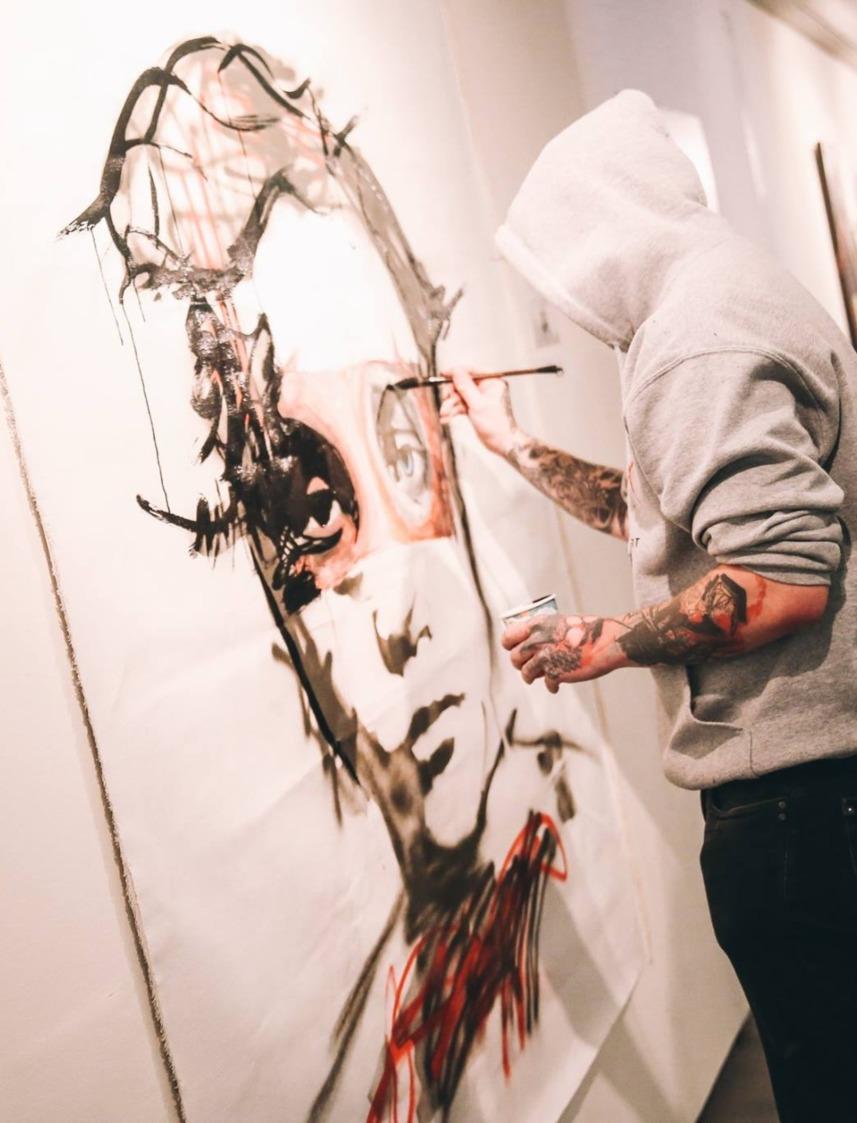

ART H A B E N S
United Kingdom
I am a multidisciplinary artist based in London. The purpose of my research is to playfully reveal the question of aesthetics and domination. In my work I directly expose contradictions, differences and singularities through the use of the body as an archive. My way of investigating this theme is through history, memory and the repetition of existence. I use mundane objects and motifs to ignite a praxis of postidentity.
In my artistic practice, I draw attention to the subjectivity of knowledge and meaning. My works allude to meaning and knowledge through verbal and symbolic, visual references. At first, it seems that the words and symbols contain a certain meaning or knowledge. My research into the themes I want to depict make it so that the references are grounded in contemporary and historical sources, ranging from mythological stories to scientific formula.
Coming from an architectural background I’ve always had great admiration for art and the conceptual thinking processes involved in it.
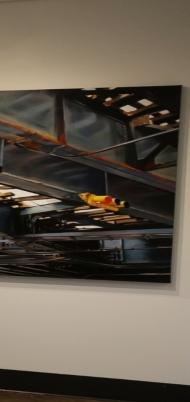

An important aspect that influenced me was the multicultural background I’ve developed over the years while living abroad which enriched my cultural dosage and led me to create my own fusion of those cultures.


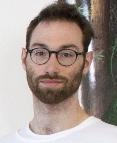

As I always say: “an artist is a prisoner to his imagination, jail with no chains”.
My new series are based on an attempt to capture the slowness of images, countering the tempo of electronic picture noise. My pictures are missing everything colorful and loud. Ostensibly nothing happens or only little, but everything seems possible at any time. Perhaps the sceneries found there only form the resonance to my inner worlds. There are no really real pictures of landscapes to be seen, but open wide horizons, but they come from the abstraction.
I love to find fleeting moments of beauty in nature and express how it impacts me through painting.
My passion is to create a dramatic visual experience of vibrant color, contrast and depth.



My distinctive artistic voice comes from a deep respect for nature and a keen curiosity for the mechanics of life. I enjoy exploring the space on the edge of what is visible, compelling the imagination to take a deeper look.
My art represent places I want to travel to, people that are important to me or images in my mind that I feel are worth sharing. A lot of the time my art has messages that I want to get through the viewer a, other times I want the viewer to be in awe and take in the detail and time it took to create such an image. If the paint on the canvas does not excite me then I can not say it is finished, my level of acceptance is so high that at times I have to know where the finish line is and not go an extra few miles. My art consists of mainly acrylic paint but on occasion I work with charcoal and pencil.

From illegal graffiti to contemporary museums, Ard Doko has been taking the international art scene by storm since the age of 19. Armed with spray cans, markers and brushes, the artist is not only tackling 900 square feet walls but has also proven to exhibit his paintings around the world alongside artists like Shepard Fairey, The London Police, Max Zorn and Joseph Klibanksy. The works of Ard Doko combine melancholy as well as his need to devour the beauty of life.
My artistic practice is about seeing the world through the eyes of a child, having dealt with their dreams and anxieties in previous years - food, toys, paintings, drawings and art installations being the mediums which I have used. At its deepest level I am researching the childlike psyche as a way of understanding the world as an empath. Each of my solo exhibitions carry on like a chapter in a book, from one to the next, so as the world changes before them, so do my use of materials.

For many people, their place of residence defines them completely. My definition comes from deeper within. I am a photographer. Living in New York and travelling the world have only added to my intrinsic drive to capture life through my lens. My view of the world in clear lines and contrasts definitely lies beneath my inclination towards black and white photography.Nonethel ess, I am constantly trying to create unique photographs from familiar scenes in New York City and wherever I travel.
Thomas C.Chung

Dilum Coppens
Michael Gatzke
Freya Tewelde
Becca Farmer

Hege Haraldsen
Ard Doko



 An interview by , curator and curator
An interview by , curator and curator
Hello Thomas and welcome to ART Habens. We would like to invite our readers to visit https://thomas-c-chung.com in order to get a wider idea about your artistic production, and we would start this interview with a couple of introductory questions about your background: you have a solid formal training in Art and you are currently pursuing your studies in psychotherapy in Melbourne, Australia. How did these experiences influence your evolution as an artist and help you to develop your attitude to experiment? In particular, how does your multicultural substratum due to your Chinese-Australian roots direct your artistic research?

Hello ART Habens – thanks for having me. I’ll be honest...I’m not a great academic, but I am a keen learner. I’ve been studying Art for some years, but the most important things I’ve learned in my life & career have always been from outside of classrooms & institutions.
I feel like moving into psychotherapy will strengthen & deepen my knowledge of what I was already interested in; exploring the childlike psyche. Rediscovering our inner child...it’s essential to our core well-being. Understanding how we lose it to only then regain it, I think it’s a fascinating timeline to uncover.
My heritage isn’t obvious in my practice but it is a deliberate choice. I never realised being different mattered to anyone when I was younger, but I remember one day in primary school I was confronted by an older student during lunchtime. I was told, “You’re Chinese”, in a way which made me
understand that they didn’t like me. I wondered why that could ever be a bad thing. I’ve always observed the world from a wider perspective since then, choosing not to focus on my background, but upon behaviour & memories.
For this special edition of ART Habens, we have selected “From Up Above…So It Is”, a vast series of cloudscapes printed upon
Thomas C. Chungmirrors, that our readers have already started to get to know in the introductory pages of this article. What has at once impressed us of the way your interesting project is the way you sapiently created such a powerful visual translation of the human perceptual process, providing the viewers with such a multilayered visual experience. When walking us through the genesis of “From Up Above…So It Is”, would you tell us how did you structure your process on a technical aspect, in order to achieve such brilliant results?

This series of artworks was a significant departure from my previous decade. My conceptual practice was always concerned about developing a new ‘chapter’ every 10 years, like a giant storybook from an artist. It’s a lifelong pursuit.
Moving beyond the soft & tactile, delving into a new contemplative world of hard & organic edges, unseen layers, reflective materials, melding light & metallic surfaces, it was a clear distinction from my earlier years. Photography has finally worked its way into the foreground in my professional studio sessions & it’ll evolve into new media & the performative in the near future.
These cloudscapes were printed on mirrorstechnically it was a difficult process to perfect. Numerous trials were made over an intense 3 months, checking it daily for progress. We finally had a result which was fitting the finish I was after when this time was up. Mashing up aerial photography I had taken during my travels, the images are a combination of personal landscapes using drones, polaroids & digital tinkering to give the compositions that you see here.
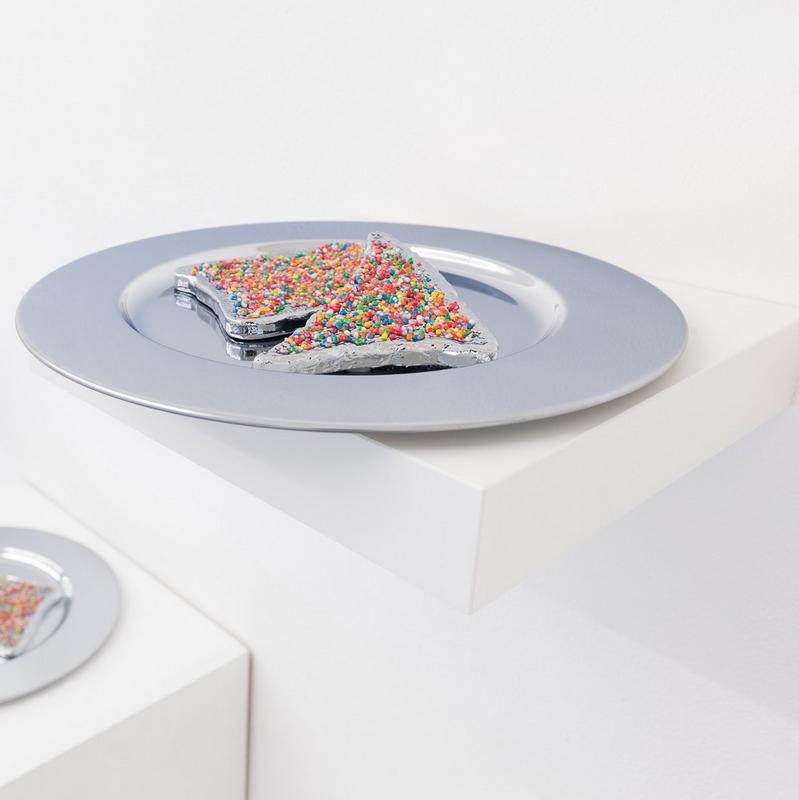

We have appreciated the way “From Up Above…So It Is” merges realistic imagery with such a captivating abstract sensitiveness: how do you consider the tension between the real and the imagined that coexist in your works?

I started photography from an aesthetic point of view - these works are a consideration on all the aspects I most appreciate. You’ll be able to see that I’m not what you would call a documentary photographer, nor am I setting up elaborate sets to photograph from (all of which I do love & appreciate). I’ve always seen myself as being more of a ‘painter at heart’, selecting aspects I needed before eventually discarding it. I approach photography, sculpture & installation in much the same way.
What we perceive to be real or imagined is really hard to decipher in this world of digital imagery. 100 years ago I’m sure the conversation was different & 100 years later it’ll shift entirely once again. That ‘play’ of the real or imagined is entirely psychological I feel, as techniques nowadays have become so advanced, it’s possible to make the elaborate look natural & the natural to look surreal. What we say is...is. Or isn’t. Depending upon the belief of the viewer.
Austrian Art historian Ernst Gombrich once remarked the importance of providing a space for the viewers to project onto, so that they can actively participate in the creation of the illusion: how important is it for you to trigger the viewers' imagination in order to address them to elaborate personal interpretations? In particular, how open would you like your works to be understood?
This is quite an interesting question. Something I’ve often thought about. I’ve never created just for myself, I’ve always welcomed (& in fact encouraged) audience participation. In my eyes,
an artwork isn’t activated unless there are people in the space to see it or feel it.
My perspective is essential to the work & obviously it is a part of the process, but as I’ve grown older, I’ve realised that you can’t impose a point of view upon someone who is seeing something for the very first time. It’s important that the audience has the space to reinterpret what it is that stands before them. As artists, we only try to guide them to see what it is that we have created. To do anything else is to be too forceful.
As you have remarked in your artist's statement, the compositions are in a state of free fall, drifting in the sky, passing through a prism of colour and peering into the sea. How did you structure your process on a technical point in order to achieve such brilliant results?
I was thinking about how I would start my next chapter. Psychologically, what happens to us when we leave our innocence behind (...that strange moment we realise that life is not forever & that pain does exist)?
I saw it from a child’s perspective & wondered to myself, “It must be like falling from the clouds”. A dreamer drifting back into reality. That’s how this series began.
I work in a way that is always mindful of those who visit, to see if they can uncover my story. Starting from a title, progressing onto its feeling & execution, the technical points into making the exhibition are actually the last things I have in mind.
We have really appreciated the vibrancy of thoughtful nuances that mark out your artworks, and we like the way it creates tension and dynamics. How did you come
about settling on your color palette? And how does your own psychological make-up determine the nuances of tones that you decide to include in your artworks?
I’ve always loved colour & in my previous textile works I was also very playful with it. In this instance I wondered, “What is it that we were falling through?” – how do you speak of lost innocence?
Staring at a double rainbow in the sky one day, it popped into my head that this was the colour palette I would use...against a backdrop of black, silver & white. Set against mirrors, granite, neon, chrome & melted plastic toy aeroplanes, these materials became a part of the light & dark I wanted to infuse into the installation setting.
Mexican artist Gabriel Orozco once remarked that "artists' role differs depending on which part of the world they’re in. It depends on the political system they are living under": how do you consider the role of photography in our globalised and media-driven contemporary age? In particular, as an artist particularly interested in exploring the childlike psyche, how do you think your works respond to it in finding hidden, crystallised moments in the everyday?
I think photography has changed a great deal in terms of what it represented to people. It was once thought of as being quite elitist capturing the essence of what was ‘real’, beyond what painting could aspire to. Then it progressed into the surreal & imagined, shifting further into a realm of what is now an idealised version of perfection for the world at large.
I try to not let this burden the way I create as I think history is for curators & academics to
reflect upon, whereas my role (although not confined in any way) is to concentrate on what it is I’d like to say through my creativity. I find what I like aesthetically, cut it up & put it
back together again.
You are an established artist and over the years you have internationally exhibited your artworks, including your participation to the


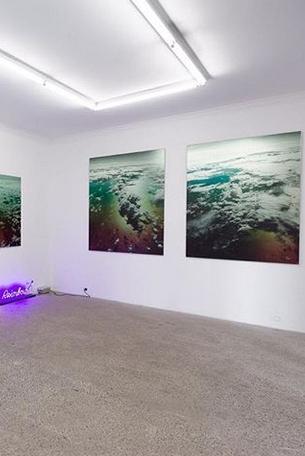
2nd Land Art Biennial in Mongolia, and The APS Mdina Cathedral Contemporary Art Biennale in Malta: how do you consider the nature of your relationship with your audience? And what do you hope your audience takes away from your artworks?

I don’t want to play humble, but I find that word ‘established’ quite difficult to accept. I still feel like a beginner. I’ve worked very hard

over the years & it was actually out of necessity rather than ambition that I pushed on.
I grew up as a very shy young man, so the way I’ve interacted with my audiences has definitely changed. At its heart, it has always been about connecting, trying to reach those that were interested or curious, seeing where it might lead. I used to be very set in my ways,


wanting everyone to see what it is I had to say. Nowadays, I’m happiest when people spend some time amongst the work. Asking questions...being curious.
As you have remarked once, you believe art that has any social importance should be reaching a wider audience. Direct relationship with the audience in a physical is definitely the most important one, in order to snatch the spirit of a work of Art. However, as the move of Art from traditional gallery spaces,
to the street and especially to the online realm increases: how do you consider the role of emerging online technosphere — and platforms like Instagram — in creating new links between artists and worldwide audience?

Art has so many variations & reach such different categories of people, it’s hard to quantify what is of importance to a society. Some prefer the surface, some prefer the depth, some prefer works that don’t even

exist after they’re completed. How this all transfers itself into the world is where being online is most worriesome (& harmful) to those that occupy it.
At a click, we can reach huge amounts of people, but for some, it is a struggle to be heard amongst the crowd. To create works which respond to such reactions is damaging to an artist’s psyche I think. I’d highly recommend doing what ‘feels right’ rather than ‘what you feel will be successful’ as Art that’s feeding others should also be feeding yourself. If it swings too much to one side that’s where our creative nourishment disappears. Keeping a healthy balance & respect for the two gives the artist longevity.
Thanks a lot for your time and for sharing your thoughts with us, Thomas. How do you see your evolution as an artist over time? Are there any things that you do fundamentally different from when you started years ago?
You’re welcome! Things have changed for sure...the way I’ve created new work, the things I have planned ahead. I try my best to steer it forward no matter the circumstances. There have been some heartbreakingly sad moments in my time in the art world, but also so much purity I wouldn’t trade it for anything.
I thought I would always be a certain type of artist when I first started, but as I made more & more work, I realised I was changing without even noticing. I’ve been trying to bridge the commercial & conceptual parts of the art world throughout my professional practice – it’s not something I recommend to most (it’s very timeconsuming).
I have enjoyed the journey though. And hopefully I’ll be able to tell the rest of my story.

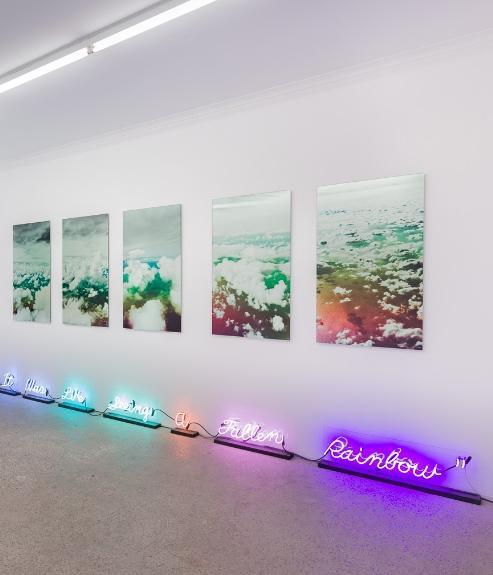
Lives and works in Bruxelles, Belgium



Dilum Coppens
An interview by , curator and curator
Hello Dilum and welcome to ART Habens.
Before starting to elaborate on your artistic production we would like to invite our readers to visit https://www.dilumcoppens.com and we would start this interview with a couple of questions about your background. You have a solid formal training, and you hold a BA and MA in Fine Arts, that you received from Sint-Lukas, in Brussels: how did those formative years influence your evolution as an artist? Moreover, how does your cultural background direct your current artistic research?
Dilum Coppens: I don’t consider myself to be Flemish or Belgian but as European. I’ve never felt a great connection to what some consider to be “Belgian” culture, but the larger European culture and its sources have always fascinated me. Cultures such as the ancient Greeks and Romans.
I think that is where my fascination for myths comes from: it started with a fascination with fantasy-stories, which have their cultural origin in myths, and that evolved into myths throughout my education. It’s a way of understanding the world which isn’t based on factual knowledge but internal knowledge.
Science explaining how everything works was boring to me. By explaining how lighting strikes, it takes the magic out of it. Having a story that tells of a supreme God striking the earth with lighting bolts out of anger was much more fascinating: it reflects our feeling
on lighting, it touches our soul. Sciences didn’t do that for me. It’s safe to say I kind of lived in my own world a lot.
In secondary school, I started out studying Latin but was more interested in the culture than the language. I failed and started studying tourism where I had art history courses which really shaped my passion and respect for art and the history we built on.
From there it kind off snowballed into the Fine Arts department. To be honest, I didn’t have the best time in art school and still feel some trepidations about it. I learned a lot but also felt … limited in a certain way. Ever
since I graduated, I feel much more at ease and can develop my work more freely.
The body of works that we have selected for this special edition of ART Habens has at

once captured our attention of your multidisciplinary exploration of the relationship between mythology and the creation of meaning is the way you sapiently challenged the audience's perceptual
parameters, inviting them to question the themes of perception, experience, and tradition: we would like to start this journey in your artistic production with Comus, a stimulating video installation that explores
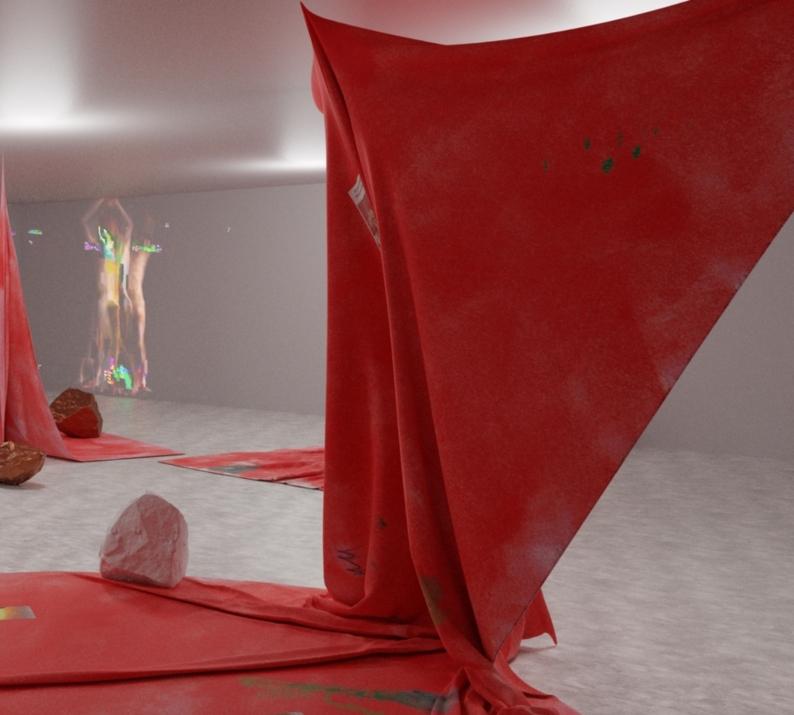
the idea of self-destruction when walking our readers through your usual setup and process, would you tell us how did you develop the initial idea of Comus?
Dilum Coppens: “Comus” was a labor of
many years, as usual with many of my works. Some themes slumber a long time in my mind, and once in awhile rear their heads. Then, sometimes, these themes clash with stories or experiences I find, and an idea is

born that goes beyond what originally fascinated me.
In this case, I had filmed myself going out to parties and the surreal atmosphere it was always set in. The flashing lights, the raving people, the social boundaries that were crossed. You don’t go off to pee in the woods or start a fistfight over a half-eaten donut on any other night. And intoxication is an important part of it.
Those movie-clips set in my computer for a long time, and I couldn’t find an interesting way of using them. Until I found the myth of Sekhmet: the Egyptian Goddess that went on a rampage against humanity and almost killed us until we disguised some beer as blood and got her into a drunken sleep. You also have the connection to the Bacchanalia, where women go hysteric in the woods to celebrate the god of wine and intoxication. It was then that I realized the connection between self-destruction and the way we go out to parties. We have an inherent need to destroy ourselves, which is luckily balanced out with our need for self-preservation. There is always this balance, one cannot exist without the other.
But, as I said before, myths show us what is important to us and is often forgotten in these rational times. Things such as our need for self-destruction, for catharsis. And we find that at parties, by getting drunk and going crazy and flirting with the idea of violence and death. We celebrate, but what do we celebrate while being drunk? Life, or death? Or both? If we don’t drink, we’re alive. If we drink, then we realize we are alive. And if drink too much, we end up in a coma and die.
As a versatile artist, your creative production encompasses Drawing, Painting, and Sculpture, as well as Video and Installation art: what does direct you to such a multidisciplinary approach? In particular, are there any experiences that did particularly help you to develop your attitude to experiment with different techniques?
Dilum Coppens: At first, I worked exclusively digitally. Video’s, digital collages, those kinds of media. But during my education, I discovered the possibilities of other media and got over my fear of just picking up a brush or a bag of plaster. I found out it was okay to push my limits and make mistakes. Of course, I have a better feeling for some media than for others. Painting, drawing, and video-art are media that grab my attention most, but recently I’ve started making sculptures as well.
For a long time, these “media” existed separate from one another. I either had a series of paintings or a video, but they never came together. After I graduated, however, I felt this weight of judgment lifted and thought: hey, let’s just go crazy. And then everything fell into place, and I started making installations out of all the different elements that I found could strengthen each other.
When the concepts develop into an image in my head, I start coaxing it into reality. It is not a straight-forward process, but by building it up slowly the image makes its own requests and forms its final appearance together with me. It is a cooperation that comes with slow experimentation and looking.
When exploring the relationship between personal and collective memory — as you sapiently did in Pioneer H, an interesting work that can be viewed at https://vimeo.com/219379390#at=93 — you create work rich of such allegorical qualities that urges the viewers to rethink to the idea of perception of time: how does your everyday life's experience fuel your artistic research?
Dilum Coppens: I’ve started to notice that I spent a lot of time observing and thinking about my observation. In those moments, I don’t interact with what I’m seeing or experiencing, but let my mind form it’s own explanations and stories.

I was watching the leaves of the trees near my house move and noticed the sound and the enormous interaction with the wind and each other. It made me think of how it would be almost impossible for me to simulate such complex physics in a digital world. We can’t accurately simulate our physical world, we use tricks to show something as realistically as possible, just like in painting. By tricking the eye into believing what it sees is real, we can create a lot. But it is never exactly reality, and that leads to one of the ideas in my mind, about the similarities and differences between reality, painting, and digital simulations.
It all comes down to being existential, and wondering what it means to be human and existing. We are bags of meat that breath and think, but elevate ourselves by creating meaning and positioning our existence. Maybe we try to escape time and our limited presence in it. We’d all like to leave our mark, and show that we created, existed, and
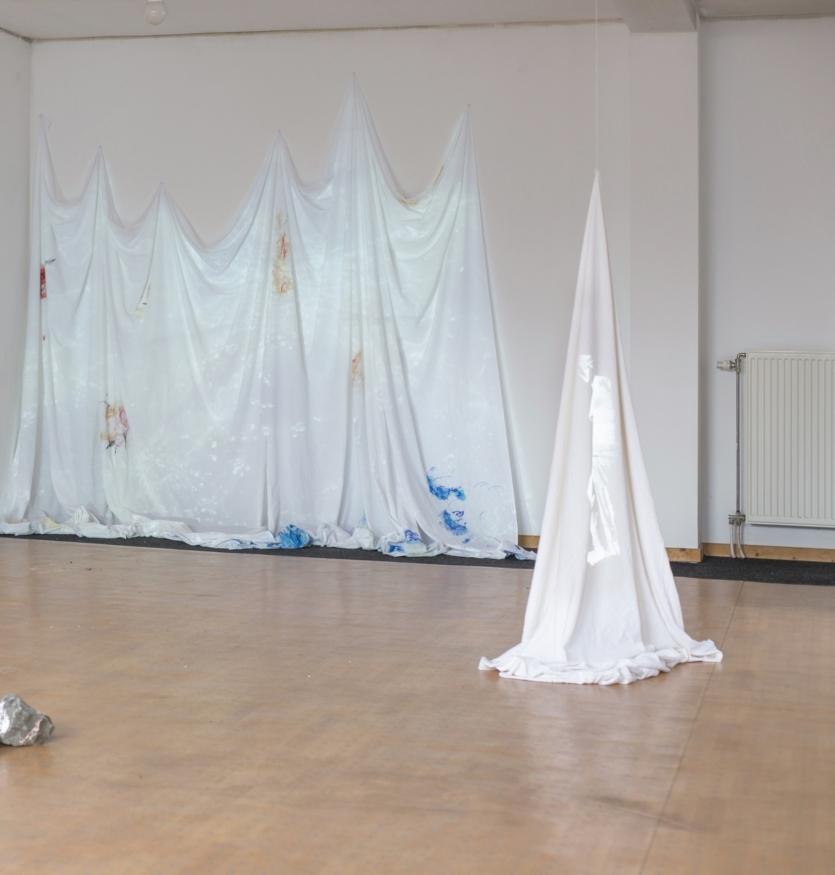
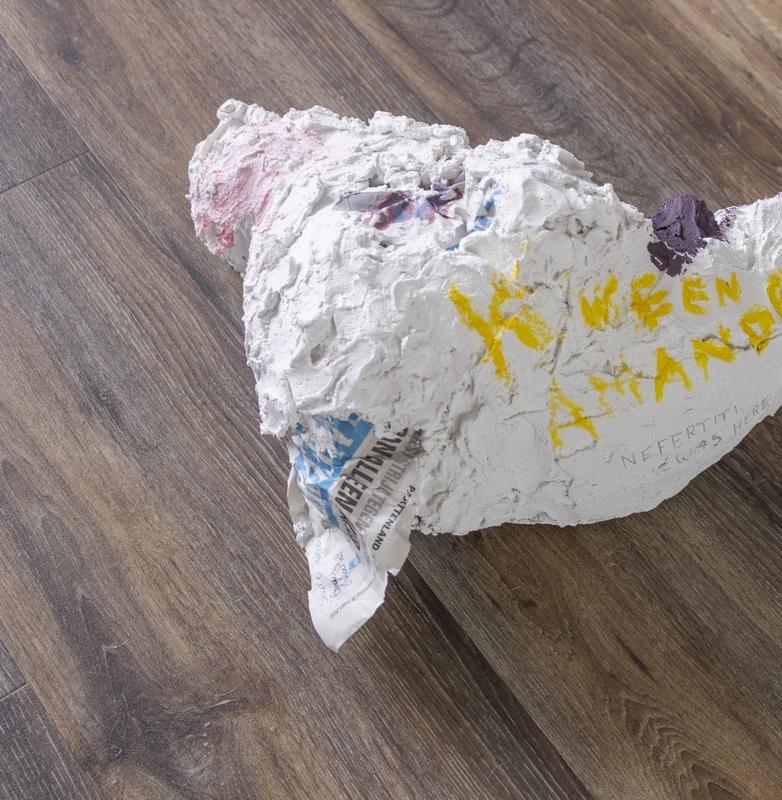
made the world richer with our meanings and ideas.

With its almost timeless ambiance, “Ilse” inquiries into the connection through birth, death, and our fate in between, and seems to invite the viewer to complete the work of art by personal associations, reflecting the fact that meaning is a human construction. Austrian Art historian Ernst Gombrich once underlined the importance of providing a space for the viewers to project onto: your artworks are very dynamic and at the same time convey philosophical aspects: how important is for you to trigger the viewers' imagination in order to address them to elaborate personal interpretations?
Dilum Coppens: The interpretation of the work begins with the references I give. They are often born from personal and historical mythological sources, but by intuition morph into something that says more and open. It is then for the viewer to use their imagination, or as I call it their personal interpretation.
For most things we perceive, every human being shares a common meaning: the sun is a source of energy, it gives life but also deadly heat. It is not something we are always conscious of, but this unified meaning is something that unites every human being. And then comes the cultural backpack we carry: the sun as it is symbolized on the Japanese flag is different from how someone from the Western-European story of Icarus who flew too close to the sun. Finally, we come to the individual meaning: perhaps you have a very fond memory of watching the setting sun with your partner and has the sun created a special meaning for you because of that.
My work is laden with elements that create the potential to project different meanings onto.

And these are what at the same time unite us
and differentiate us. We are the only living beings on the planet that create such an extensive network of meaning, it is what makes us human, what makes it possible for
us to position ourselves in the world and gives our life a purpose. And it is what makes each of us unique: our lives experiences create different meanings within us.
I try to simplify his complex way of looking in my work, and it opens up more the longer you look at think on it. You can see this way of thinking in “La Condition Humaine” and

“Humain”. The one shows our lives and thinking as we have created it: full of questions and emotions that are destined to have no fixed answer. And then you have the
lonely being that simply “is”, maybe a depiction of a human which lives without meaning. It simply exists, like a tree, standing there without question or emotion. Without

a trouble in the world but also completely empty.
We have particularly appreciated the way
your artistic research features such unique and unconventional combination between historical references and contemporary sensitiveness: an example of this aspect of your work is the interesting KWEEN AMANDEL (Nefertiti was here). How do you consider the relationship between the cultural heritage from Tradition and Contemporary sensitiveness playing within your work? In particular, does the theory of comparative mythology inspire your artistic research?
Dilum Coppens: I always find it funny that people think that different mythologies can’t co-exist, or that myths have died out. Let’s just look at contemporary religion: they all share the Old Testament, so there is something to say for a common ground. And what more is religion, but a mythology that still has a following and carries rituals that are still practiced today? And these contemporary mythologies are based on older mythologies that died out.
Joseph Campbell also saw this within the old mythologies: stories from ancient Greece and Indian tribes that hold the same fundamental truths. The thing that unites mythology is the fact that they speak about fundamental truths about being human. They talk of love, death, our relationship with nature, and ourselves.
We like to think that we understand the world these days. We are still looking for a theory of everything in physics, so we aren’t quite there yet, but we understand a lot about our world. But how much do we know about our place in it, our relationship with it? Our relationship with ourselves and the reality we live in. Certain things are measurable and predictable, and those are
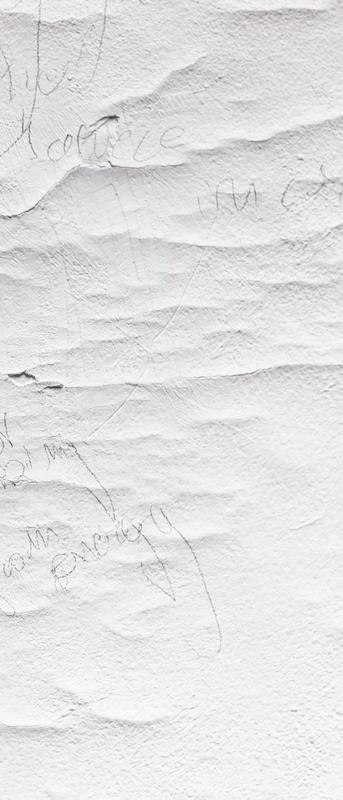
perfect for science to examine. But there are other things at work in our universe, and those live within ourselves. They are examined by myths, and could never fully be described by science.
By connecting these mythologies to contemporary references, I try to make clear that these ancient stories still claim a space
in our world. Queen Amidala, queen Nefertiti or queen Hekabe, what’s the difference, really?
As you have remarked once, your works allude to meaning and knowledge through verbal and symbolic, visual references, and we recognize such a powerful example of this aspect of your approach in the way you
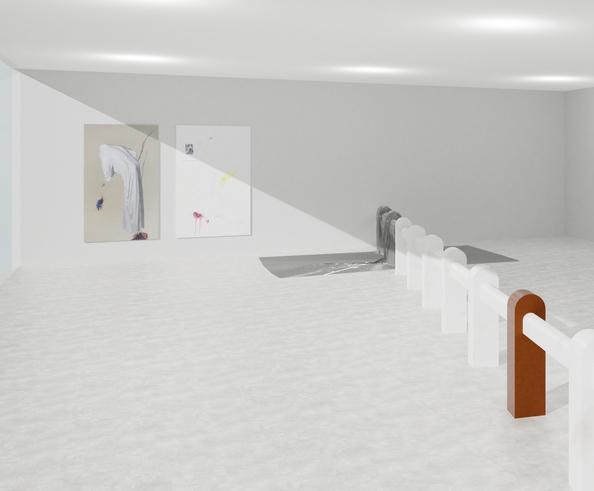
examined the notions of “love” and “lust” in Aphroditae, as well as in how do you consider the role of symbols playing in your artistic practice? And how important is it for you to create artworks rich in allegorical qualities?
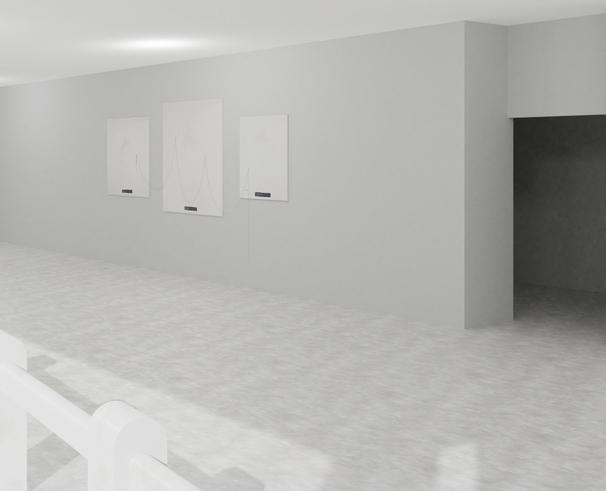
Dilum Coppens: Symbols, images, words, all carry meaning in one form or another. By
connecting them in a system of references that may or may not exist, further open stories are created, but also a sense of confusion and nihilism. What does a flower have to do with death? Why do we make these associations, and how do we make them? Is there a purpose or sense in it, or does it revert back to a philosophy where
essential nothing has meaning, is only a human construct?
These “clear” symbols are mixed with marks where the meaning of them is more abstract. Marks or stains, and scribbles are made by accident. We make them without thinking, and carry no real meaning except for the unconscious process of creating. They may carry a certain expressive quality, but how would you describe that expression? They pull the symbols from rational knowledge to an irrational knowing.
In the case of “Aphroditae”, the marks and symbols are essentially the same. A stain may start to look like a dove, and a red mark can start to look like a bloodstain. Add “eros, sero, sore” to it, and you get a whole different set of associations.
Everything is meant to carry an open allegorical meaning, for the viewer to examine within themselves.
Aphroditae also examines our relationship to the ideas of “love” and “lust” has shifted throughout cultural and religious influences. Mexican artist Gabriel Orozco once stated, "artists' role differs depending on which part of the world they’re in": does your artistic research respond to a particular cultural moment?
Dilum Coppens: As an artist, you always respond to the time and place you find yourself in. Especially in a time of Trump, BLM, and a real push for a more inclusive community and a re-examination of the white gaze, it is important we also think about what an artist does, and especially a privileged white, male artist such as myself.
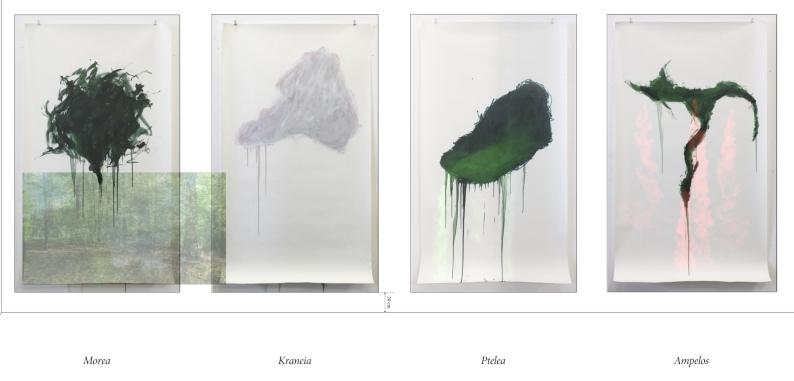
As an artist myself, I can’t talk about the hardship of disadvantaged groups. Starting from my own cultural gaze, I try to talk about what is universal for all of us. Love and lust are the same for all of us, regardless of our culture or sexuality or color, when you take away everything around us. It shows how we are all the same.
Sometimes, more politically charged things do sneak into my work. In one of my works “Eppela - The Missing Piece”, this is very clear. The work started as a material or aesthetic re-interpretations of the ruins and situation in Aleppo and Syria. I fell into the trap of white, European artist: using someone else’s misery to make work. Who was I to talk on these issues, on these horrors that I never experienced? That way, the work changed to draw attention to my own wrapped gaze that is reflected in a lot of Western people. We see it with a cold
objectivity, maybe a distant emotional connection that is disproportionate to the immense suffering. But again, who am I to judge as someone who is guilty of it myself. I only show so people can think and react to it for themselves.
Your artworks have a very distinct visual identity and you often create large installations that, as Pandemonium, provide the viewers with such an immersive visual experience: how do the dimensions of the final result affect your workflow?
Dilum Coppens: As I said before, I start with a clear vision of the work when I set out to make it, only to have it change while working on it. The same goes for my installations: I have an idea, and during the process, the final dimensions and results change. I use a 3D-modeling program to create my installations in preparation for eventual

execution that might take place. These visualizations are created in a virtual space that is completely under my control as far as dimensions go. A room can grow or shrink easily in function of my vision. They give me the freedom to create potential results without financial or physical restrictions.
Making a real installation is another way of working, which might be more interesting in the end. My work and I have to create a relationship with the space. I can’t make installations without having the space, whether on my computer or in real life. Together with the space, the individual works come together and create something bigger than the sum of the separate parts.
I bring together individual works or elements when I make installations, so this allows me a certain degree of flexibility as well: things can be added, moved, or removed. Making the individual works is an intense, intuitive way of working. Making the installations is a bit the opposite: it gives me time to reflect, try out, without it having to create traces that can’t be erased. It is another moment of reflection.
Over the years your artworks have been internationally exhibited in several group exhibition and you also had the solo EppelaThe Missing Piece at Werkstadt Kunst, in Berlin, Germany and your recent ruins and fragments of an eremite: how do you consider the nature of your relationship with your audience? Direct relationship with the viewers in a physical context is definitely the most important one, in order to snatch the spirit of a work of Art. However, as the move of Art from traditional gallery spaces, to the street and especially to the online realm — like Instagram — increases: how
would in your opinion change the relationship with a globalized audience?
Dilum Coppens: Because of our reaction to COVID-19, art has become more accessible through the online world. It gives local artists a chance to show their work more internationally since the audience has moved to a platform that has no geographical boundaries. It requires fewer funds to put up work online, and thus there is more possibility to do so. The art world has, to an extend, shifted a bit to make us more aware of the possibilities it gives us. It also made us realize more that, when we are stripped down to ourselves and those around us, we need culture to stay alive. We can’t just fall back on nothing, and when nothing is left, culture remains. The threshold is also removed in these online spaces: people don’t have to get over their fear of entering a museum with the idea that it won’t be good or won’t make sense to them. They can get a taste of what’s out there from the comfort of their own bubble, without the fear of misunderstanding or feeling the judgment that sometimes comes with trying to understand art.
Young artists already understood these possibilities. Instagram has become a tool for us to show our work and have a bigger opportunity to get ourselves out there. Instagram allows me to throw myself into the world without having my social anxiety come into play, and show everyone not just my art but my everyday look on life. And if you’d like to see it for yourselves, you can always go check out
https://www.instagram.com/dilumcoppens.
It also allowed artists to explore different ways of working, such as VR or the digital exhibition space. I’ve shown work in a few

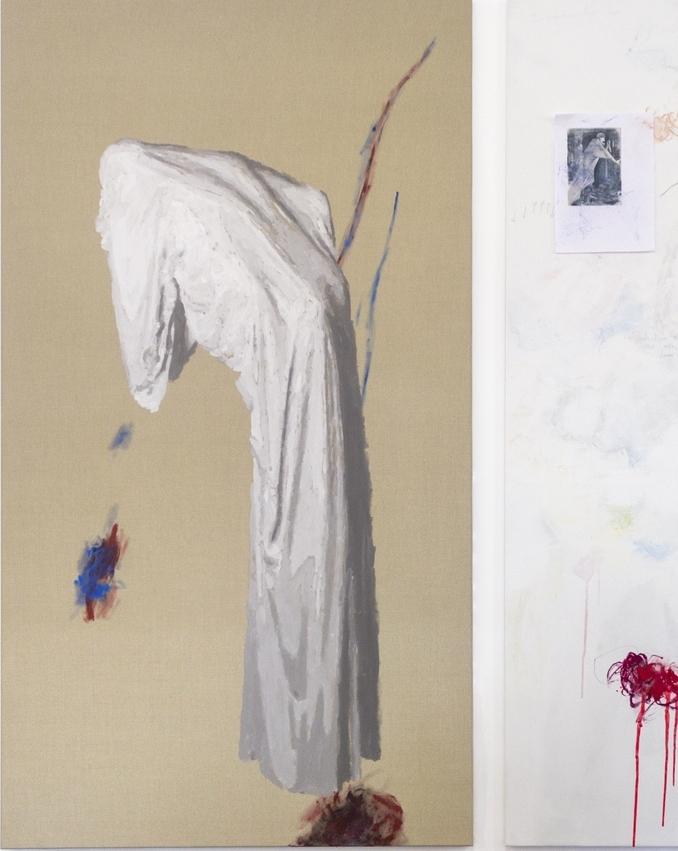
online exhibitions during the quarantine, but I changed the work a bit to adapt it to the new environment. Simply showing pictures of a painting doesn’t cut it for me, because that new environment requires a different approach and reality. I adapted my paintings to an online reality, so they feel more natural where they are shown. There are so many possibilities to work in an online space and adapt existing physical works to it so that digital work can exist in the digital space and physical works in the psychical space.
We have really appreciated the originality of your artistic production and before leaving this stimulating conversation we would like to thank you for chatting with us and for sharing your thoughts, Dilum. What projects are you currently working on, and what are some of the ideas that you hope to explore in the future?
Dilum Coppens: And I’d like to thank you for your very intriguing questions and for giving me the opportunity to give a thorough look into my world and art.
I’m currently working on a series of paintings and sculptures for an exhibition in Ghent and Liège in Belgium. I used to use prints of images in my work, but recently I’ve started painting pictures and symbols, which adds a new dimension to my work. I’m very excited to explore those implications further and see where it takes the work.
Video and digital work has always been a part of my work, and now it keeps coming closer and closer together with my “traditional” media such as painting and sculpture. Those are exciting developments for me, and I’m really hoping it will come to full fruition in the future.

To illustrate this, I would like to start with a quote by Günter Seubold in "Silence and Being" of 2014, and there from the essay "Aesthetics of silence":
"Silence is fundamental for every individual, for every culture as a whole. A culture that forgets that and sets it on "full droning" is dying, basically dead, even if she keeps herself on her feet for a while. But what keeps her on her feet does not come from the time of the full boil, but from a time before that, a time when silence had not been destroyed. One feeds on the nourishing culture or fruit of earlier decades and centuries, while one pursues its consuming business and pleasures. "
Well watched. Our fast-paced world is always in the fast lane at high speeds, but it does not come any more, do not allow yourself any more breather. Does not come to your senses anymore, to reflect.

There is an elementary reason in the Bible (Exodus 20: 811): For in six days the LORD made the heavens and the earth, the sea, and all that is in them, and he rested on the seventh day and saw that it was good. This biblical 7 day has tended to be lost in modern times. Silence is not very popular in our busy time. Silence, that sounds somehow stale, outdated, even strange. Silence has no room left. Silence does not just happen. You have to make a conscious decision to be quiet. Especially in the context of the Internet, iphone, Facebook, Instagram and Twitter, where the images rush past one at a regular rate. To experience silence, you have to go offline.
So my new series are based on an attempt to capture the slowness of images, countering the tempo of electronic picture noise. My pictures are missing everything colorful and loud. Ostensibly nothing happens or only little, but everything seems possible at any time. Perhaps the sceneries found there only form the resonance to my inner worlds. There are no really real pictures of landscapes to be seen, but open wide horizons, but they come from the abstraction. The few people and animals appearing in collage form seem archaic and concentrated. They do not really participate in their activities.


Hello Michael and welcome to ART Habens. Before starting to elaborate about your artistic production we would like to invite our readers to visit https://www.michael-gatzke.de and we would start this interview with a couple of questions about your background. You have a solid formal training and you hold a Bachelor of Fine Arts, that you received from Alanus Hochschule, in Alfter, Germany: how did experience influence your evolution as an artist? Moreover, how does your cultural background direct your current artistic research?

Michael Gatzke: I have been artistically active for most of my adult life. But it was only very late in life that I made the decision to study art and successfully complete it. This decision was absolutely right! Less in terms of the artistic skills I learned. These were very helpful, but not essential. Several years of theoretical artistic discussion with the professors and other students were the real benefit of the studies. The resulting different view. The developed value
for good and desirable art. That was the real gain. A gain that is no longer lost and that has had a decisive influence on my artistic activity ever since and now permanently sets the standard for the standards of my own work. I can only speculate about the cultural
Michael Gatzke Michael Gatzkebackground. Certainly I am socialized to a Western European and - yes - in a patriachal context. But in my professorial class there were fellow students from 4 continents and the percentage of women was 75%. These diversifying circumstances relativize my own position and have broadened my artistic horizon - probably rather unconsciously.
The body of works that we have selected for this special edition of ART Habens has at once captured our attention for the way it highlights the resonance between the inner world and the outside reality: when walking our readers through your usual setup and process, would you tell us how did you develop your initial ideas?
Michael Gatzke: I am an intuitive painter with a penchant for order. My paintings do not follow a predetermined concept. At first, the - controlled - coincidence prevails, one might describe this as an expression of the inner world. In this process, aberrations and coincidences help. But many things do not stand up to temporary scrutiny. So corrections and overpainting follow. A multilayered

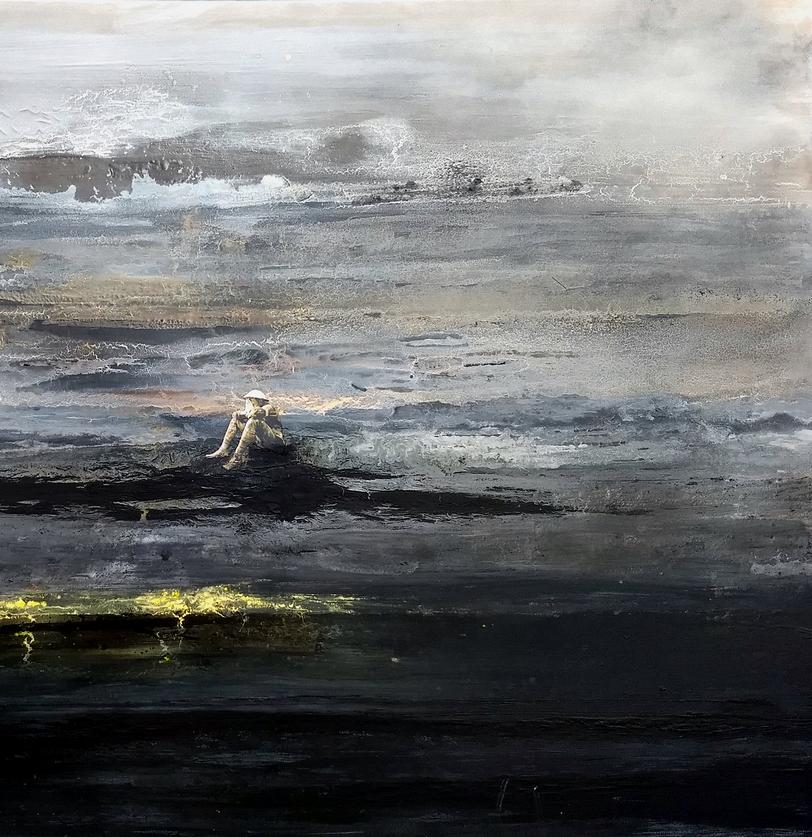
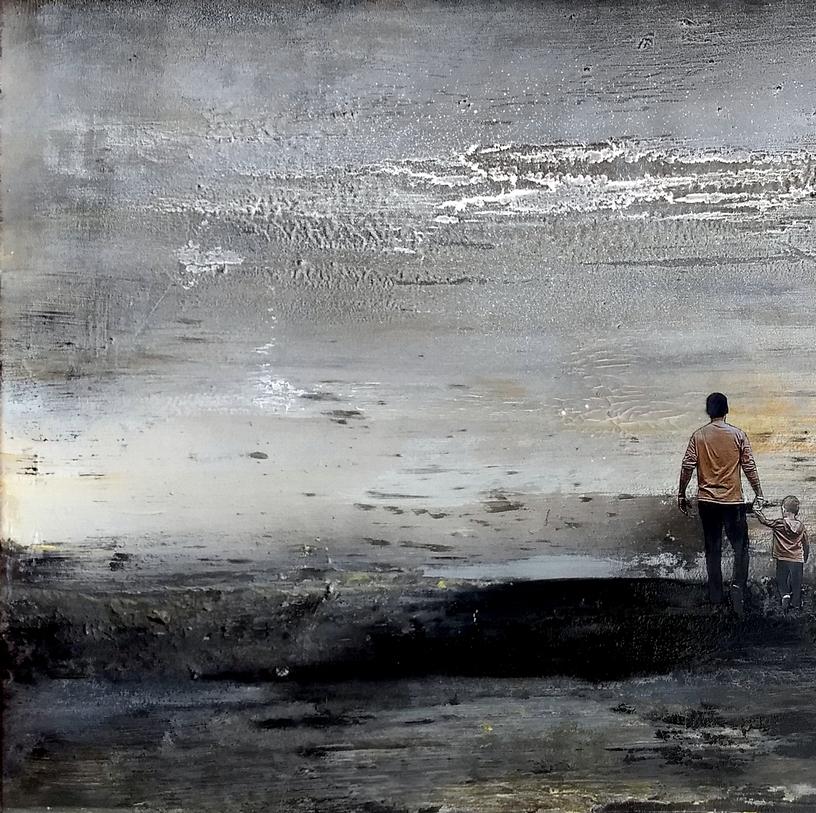
process develops. If the intermediate result is acceptable, I recognize a finished picture in the main features, which I work towards. Weak points are then optimized, the overall construct is (often) brought to its final effectiveness by means of collage, usually supported by the strong contrast between abstract painting and hyperreal picture object.

Your artworks features references to human forms, which are immersed into such timeless and ethereal ambience, that seems to create a bridge between reality and imagination. Scottish artist Peter Doig once remarked that even the most realistic works of art are derived more from within the head than from what's out there in front of us, how do you consider the relationship between reality and imagination, playing within your artistic production?
Michael Gatzke: My colleague Peter Doig, whom I also hold in high esteem, is right. Period!
Your artistic research seems to express such subtle socio political criticism on our media driven society, deeply pervaded by the context of the Internet, iphone, Facebook, Instagram
and Twitter, where the images rush past one at a regular rate: how does your artistic researce reflect our particular cultural moment? Moreover, do you think that artists can raise awareness to an evergrowing audience on topical issues that affect our globalised society, constantly saturated by images and flow of information?
Michael Gatzke: First of all: iphone, Facebook, Instagram and Twitter, are not to be rejected. These are cultural achievements that fundamentally enrich our lives. I don't know any artist colleague who - consciously - doesn't use social media. But it would be dangerous to leave 100% to them. No responsible contemporary would give 100% to capitalism. It needs the regulative. And one of the regulators is art! But not in the sense that art influences current political processes. That may be the case in a few cases. Those who practice art for its direct impact on the development of the world will (almost) always fail. Good art is rarely the result of such an approach. In any case, it does not generate sustained attention. Art has a different mechanism of action. We artists can marginally
change the viewing and thinking habits of the viewers with our works. And this effect should not be underestimated in its sum and its long-term impact!
As you have remarked in your artist's statement, your new series are based
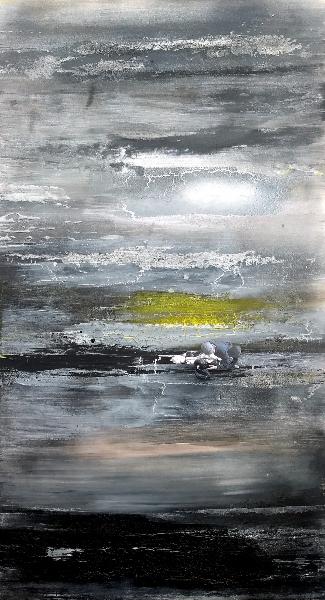

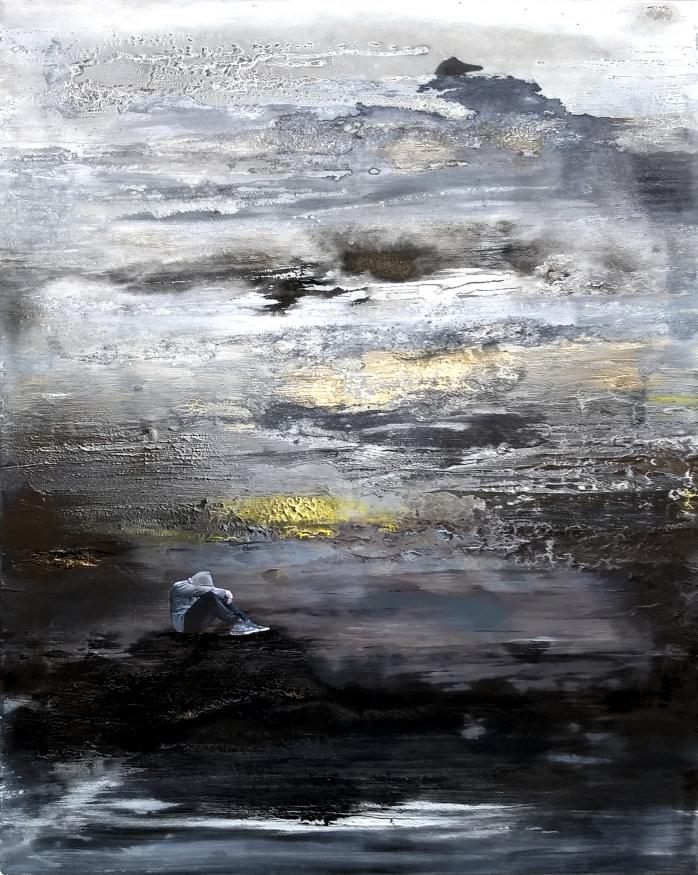
on an attempt to capture the slowness of images, countering the tempo of electronic picture noise: how do you consider the relationship between time and images?
Michael Gatzke: A picture created by a painter is always a snapshot, with a pause inherent in it. The same applies to photography, of course. However, if both are successful, they can also capture a story that has a before and an after in the viewer's mind. But this process always implies a deceleration and, connected with this, a higher degree of concentration on the object of representation than is permitted by the electronic media, which are constantly changing according to their work. Compared to the photographer, the painter also has the advantage of being able to change and influence "reality" according to his intention. An effect that usually gives the individual painting special attention. In modern times, the effect on the viewer resulting from the extensive withdrawal of the time factor is the real asset of painting.
Your pictures are missing everything colorful and loud, and with their
unique dreamlike ambience, they demonstrate that vivacious tones are not necessary in order to create tension and emotional involvement: how does your own psychological make-up determine the nuances of tones that you decide to include in an artwork and in particular, how do you develop your textures in order to achieve such unique results?
Michael Gatzke: This is the result of a development process. In my artistic biography, the colorful and loud was initially very dominant. A visit to an exhibition of the Belgian artist Hans Op de Beeck suddenly made me aware that it is not the "club" of high attention by means of the most shrill presentation possible that conveys the more lasting messages, but rather the more subtle offerings that challenge the viewer more to confront than the superficially more appealing garishness can. Following this insight, for a while I only used black-white-grey. This was followed by the experience that the world is also colorful and that painting cannot resist this. But it depends on the dosage and so I now allow the color, but it is not allowed to be the main actor. About the process of
creation of their works all artists usually express themselves only very narrow-lipped. I make no exception to this. Only so much: my works consist of many layers. At the beginning color and black and white are in balance, in the further painting process the colored part is reduced.
Your paintings not only express your vision, but also work as a communication tool to interact with wide audience where everyone can find something new and personal : how open would you like your works to be understood? And what do you hope that the public takes away from your work?

Michael Gatzke: Yes, my works all have a - intended - narrative dimension. I support this by choosing titles for my paintings. But everything else is up to the viewer. In my understanding, this is how art works. The artist only gives impulses. I have a hope, but no intention or expectation of how my work will be understood ...
And the part of the audience that does not close its eyes will definitely take something with them.
We dare say that on a certain aspect, the few people and animals appearing
in collage form in your artworks reflect such a subtle sense of peaceful
isolation: how do you select these subjects and how does your everyday

life's experience fuel your artistic research?
Michael Gatzke: I am always looking for iconic photographs of people (groups) to integrate into my work. These are not selected by me according to (social) political criteria. What is decisive is rather the mood-laden situation inherent in the photographs, which is supported by my image editing. However, the message of the pictures should not be too bold, the measure of the formulation should be measured. Finally, it is not easy to find the right motif for the abstract landscape.
A particular aspect of your works that has particularly impressed us it the fact that they reject the traditional contraposition between subject and background: how do you structure the composition in order to achieve such brilliant results?
Michael Gatzke: This is probably the result of the fact that at the beginning of my work there is no goal or theme. First of all - as already explained - I create the pictorial space. Only then does the construction of the respective



complete work follow. This lives very deliberately from the strong contrast between abstract painterly background and integrated - hyperrealistic - collage. An integration in the conventional sense is not wanted by me. The contrast should come to light, so that the viewer can rub against it.
Over the years your artworks have been exhibited in several occasions, including your recent participation to feldfünf e.V., Projekträume im Metropolenhaus Berlin: how do you consider the nature of your relationship with your audience? Direct relationship with the viewers in a physical context is definetely the most important one, in order to snatch the spirit of a work of Art. However, as the move of Art from traditional gallery spaces, to street and especially to the online realm — as Instagram — increases: how would in your opinion change the relationship with a globalised audience?
Michael Gatzke: This is a difficult terrain. I too am not only an artist, but also a viewer of the work of other artists. And for me, nothing can replace the physical contact with art. But we live in the world we

live in. And there triumphsespecially in times of Corona - the virtual space. We will all have to come to terms with this. It is only the second-best solution, which will continue to gain ground even after the pandemic. Not optimal, but better than no art education.
We have really appreciated the originality of your artistic production and before leaving this stimulating conversation we would like to thank you for chatting with us and for sharing your thoughts, Michael. What projects are you currently working on, and what are some of the ideas that you hope to explore in the future?
Michael Gatzke: I am not only a painter, but I also create installations. Like all other artists, I am moved by the impact of Corona on our daily lives. And I, too, am trying to put this into artistic forms in addition to the further development of my previous painting. Therefore I am currently developing a format of steles on which texts about life with and after Corona are applied. The steles are to be presented in public places as a touring exhibition in public places in Germany.



Freya Tewelde


Freya Tewelde
An interview by , curator and curatorHello Freya and welcome to ART Habens. Before starting to elaborate about your artistic production we would start this interview with a couple of questions about your background. You have a solid formal training and you hold a MA in Fine Arts, that you received from Chelsea College of Art, UAL: how did those formative years influence your evolution as an artist? In particular, how does you multifaceted cultural substratum due to your Eritrean roots and the years you spent in Saudi Arabia before settling in London direct the trajectory of your current artistic research?
Freya Tewelde: All my experiences have informed my practice in different ways and with varied degrees of intensity. For example, my formative years throughout my childhood and early teens were spent in Eritrea and the Middle East, and since my teens I have been in living in the UK. So issues related to social (in)equality, climate change and gender bias all play a role in my thinking today. I feel very attached to a global world that informs new identities everyday.
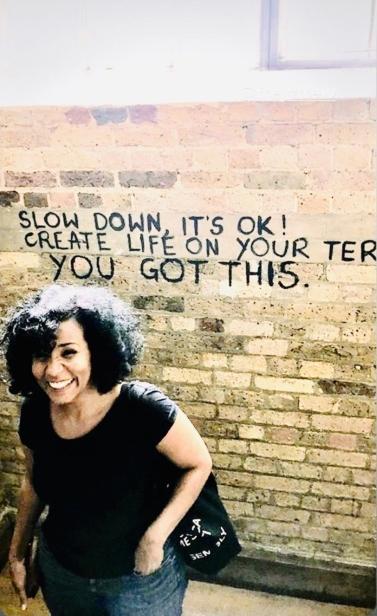
I always felt different and was always interested in finding my own way of doing things. I was very young when I left Eritrea and did not return till my adulthood. These different places and spaces have granted me an opportunity to reflect on the cultural exposure and to observe the social blind spots that are missed by many.
Finally, I don’t particularly feel art school taught me the skills necessarily as an artist but more importantly it gave me the tools to conceptualalise my ideas better.
You are a versatile artist and your practice is marked out with such stimulating multidisciplinary approach: before starting to
elaborate about your artistic production, we would invite to our readers to visit https://www.freyatewelde.com in order to get a synoptic idea about your artistic production: would you tell us what does address you to such captivating multidisciplinary approach? How do you select a particular artistic
Freya Teweldediscipline in order to explore specific aspects of your artistic inquiry?

Freya Tewelde: For the moment using moving images for me highlights the present insecurities of our time. I am interested on how we predict our future and how this integrates our everyday hopes and desires etc….at the same time my inter-action is intuitive and meditative and this fluidity of making is a crucial part of my process of being an artist. In particular, the narrative of memory, repetition and abstraction of what’s’ happening and how it exists is important within my work. And how this falls short of clarity but lands more interestingly on distortion and opaqueness.
I use mundane objects, motifs; the objects vary from figures floating in a space surrounded by satellite dishes to a figure in a morph-suit rollerblading in skates that belong to my seven year old son (ooo too small!). The floating figure in space carries a strong emphasis on loneliness, age and technology. The morph-suit rollerblading and the same figure moves in a dark enclosed room dressing and undressing to the multiple layers of suffocation with emphasis on emancipation and imbalance. I am interested in the internal bodily space and the relation this holds with the surrounding space.The work performs elements of farcicality as well as self-questioning the process through various moments of belonging and disassociation; through an endless cycle of seemingly futile actions.
For this special edition of ART Habens we have selected Rollerbladding, an interesting generative projection-triptych, that our readers have already started to get to know in the introductory pages of this article and that can be viewed at https:// vimeo.com/391702153. What has at once impressed us of this captivating artwork is the way it synchronises itself with viewers, providing them with such a shared visual experience. When walking our readers through the genesis of Rollerbladding,
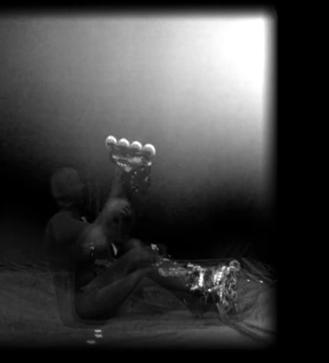
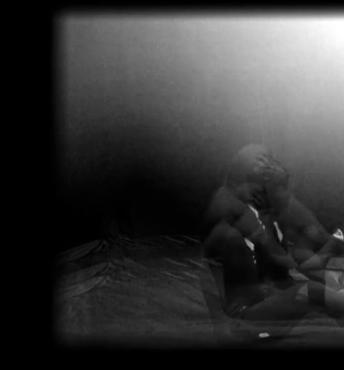
would you tell us something about your usual setup and process?
Freya Tewelde: The Rollerbladding was one moving image amongst ‘The Fossil and the Readymade’. I have always been interested in how prints occupy a part of how things turn, such as cycles and imprints on Earth and in everyday life and where they trace our footsteps and movements. What struck me is how you can’t retrace or rewind those steps and pathways. This is what I am reminded of in Rollerbladding. In repeating this interest, my research investigates the territorial differences of looking into the realisation of post– identity formations. These works attempt to re-evaluate regimes of systemic behaviour that bind the positionality of the individual in relation to cultural and global practices that govern our societies today –including our free time to rollerblade.
Inquiring into the hidden plain site of public reception, your performative practice seems to invite the viewers to look inside of what appear to be seen, rather than its surface, providing the spectatorship with freedom to realize their own perception. How important is for you to invite the viewers to elaborate personal interpretations? And in particular, how open would you like your works to be understood?
Freya Tewelde: I always welcome the viewer to have their own autonomy to interpret a work of art. After all, we see the world with our own life filters and it’s important that this remains especially possible today.
The triptych genesis you describe is what I consider the ‘touching and revealing’ notion of ambiguity and disruption and this can also include the audience in terms expectation. It’s also important for me when I make the work to explore subjects that I am unaware of in terms of how it processes or develops.
Another body work that we would like to introduce to our readers is your Boxing series, a
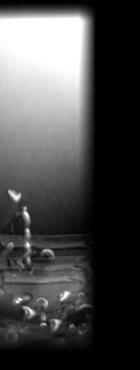
project that has struck us for the way you sapiently used minimalistic figures to evoke complex aesthetics. In this sense, your work brings to a new level of significance the
relationship with the audience: as an artist particularly involved in the creation of immersive works, we would ask you how will in your opinion technology help artist to

expand their chances to create a kind of involvement that will break the usual exhibition spaces' barriers.
Freya Tewelde: Under the banner of what is now a more significant ‘new media art’ during the COVID_19 pandemic, it has allowed and lent a new platform to interact with all kinds of

practices. It has offered a new space to view art that might otherwise have been overlooked offline. Having said this, I really appreciate work in a physical space – the aura of the work is notably a different concern. Without entering the discussion of aura in art – I sense that everyone within my community is very aware of how this is part of a new era in contemporary art and what the future brings or holds in terms of viewing audiences and performance engagements both public, private or elsewhere is something to watch carefully unfold.
As you remarked in your artist's statement, you view your work as an instrument to activate and highlight the socio-political imbalance and self care with singularity. Mexican artist Gabriel Orozco once stated, "artists's role differs depending on which part of the world they’re in": does your artistic research respond to a particular cultural moment? In particular, as an artist who sapiently uses the personal to address the political, do you think that artists can raise awareness to an evergrowing audience on topical issues in our globalised age?
Freya Tewelde: Working today as an artist, I do think we all have a responsibility to address the state of the world we live in together. I attempt to make people think differently, sometimes ethically, other times imaginatively, but most importantly, I hope people will continue to connect and engage with their surroundings. Before the pandemic, it was really important to push these challenges, always striving for the marginal voice to be heard, and now I am wondering who is really marginal in a world that could change so radically in such a short space of time. What is it to belong and bring people together through art during a pandemic for example? The images I try to produce are without racialised violence or hierarchies of power but rather the everyday questions that surround my life and others.

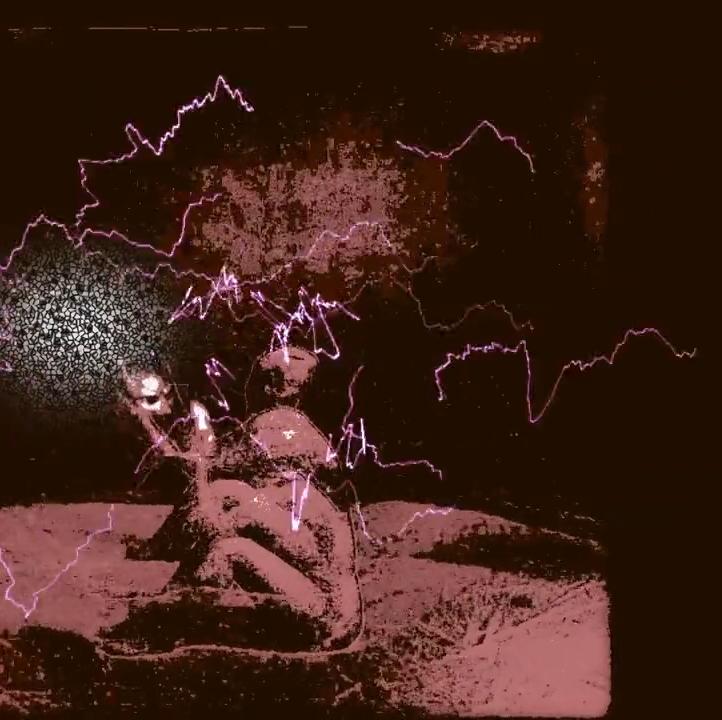
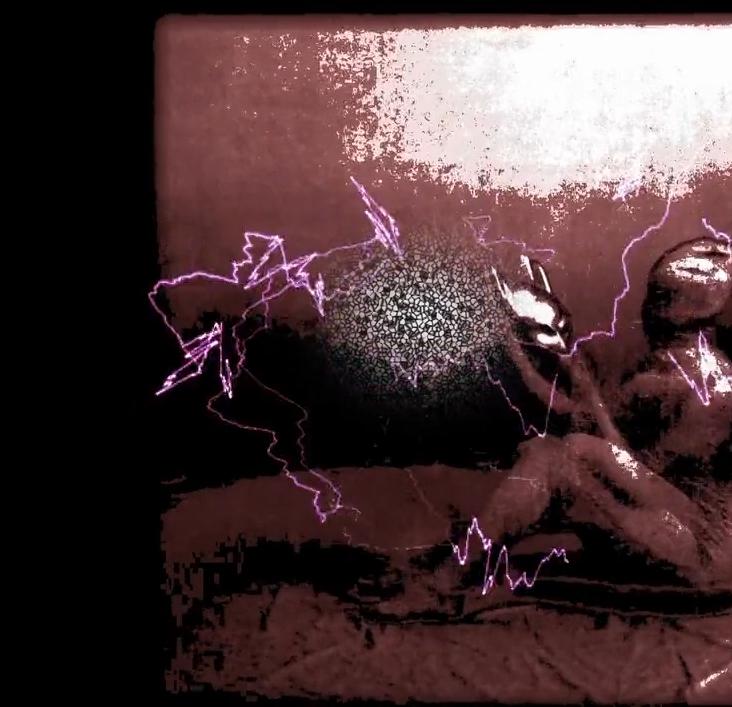
We have appreciated your unique use of the body as an archive, and especially the way your performance conveys sense of freedom reflecting at the same time rigorous approach to the grammar of body language. New York City based artist Lydia Dona once stated that in order to make art today one has to reevaluate the conceptual language behind the mechanism of art making itself: how do you consider the relationship between the necessity of scheduling the big picture of your performance and the creative power of improvisation? Does spontaneity play an important role in your artistic process?
Freya Tewelde: In thinking about Lydia Dona, I share a sense of direction between the body and the environment ones works in. I am interested in how this explores a type of non-narration/ abstraction which I begin with before I move into something more disruptive that channels the traditional flow of the subject. In other words, there is a basic narrative that I want to convey which usually arrives in an abstraction and this is what I value about scheduling and making. I see this partly embedded in spontaneity where the liberation of my practice can come together or fall apart. So both are very important in the making of work.
Sound plays an important role in your works, and reflects both contemporary sensitiveness, as the soundtrack created by Metkel Kidane for Hewan, as well as references to your Eritrean roots, as for example in Sitting in a Green Room. how do you consider the role of sound within your practice and how did you structure the relationship between sound and moving images?
Freya Tewelde: As you said it plays two parts, and in a rather unstructured format - having reference to my heritage but also equally I like the idea of how ‘soundscape’ appeals to our emotional world. The waiting room is a very important moment in the soundscape of hearing and listening - the idea of ‘deep listening’ by Pauline Oliveros is a prime

example. However, I tend to adopt the instrumental use of Eritrean jazz songs from the 1960’s and 1970’s before they have been dubbed or hacked in present times. For me, these unique sounds explore a distinct cultural transition of images from the past in Eritrean terms as well as offering a reminder of our global world with all its current media absorption.
Czech-born philosopher Vilém Flusser once defined ‘imagination’ as the abilityto abstract surfaces out of space and time and to project them back into space and time. As a creative whose work highlights the Ariadne's thread that makes visible what is often overlooked and unnoticed, how do you consider the relationship between reality and imagination playing within your artistic research?

Freya Tewelde: The work sits comfortably between these two realms - onto Afro-futurism stemmingfrom Afro-diasporic experiences. These artworks continue to evolve with the sensitivity of lost practices and forgotten heritages in new figurative configurations.
My practice exposes management in an imaginary conscious state of fairness and play. The video works support the insecure context of contemporary art today in a gentle, yet luminous future of collective development in a ‘developmental’ society. While there are several propositions in these works, together they form a clear consideration of art that remains committed to fixing roots and mending traumatic experiences that define and isolate self-care.
You are an established artist, and over the years your work have exhibited in several occasions, including your incoming show After Greed Became Form in London: how do you consider the nature of your relationship with your audience? Direct relationship with the viewers in a physical context is definately the most important one, in order to snatch the spirit of a work of Art. However, as the move of Art from traditional
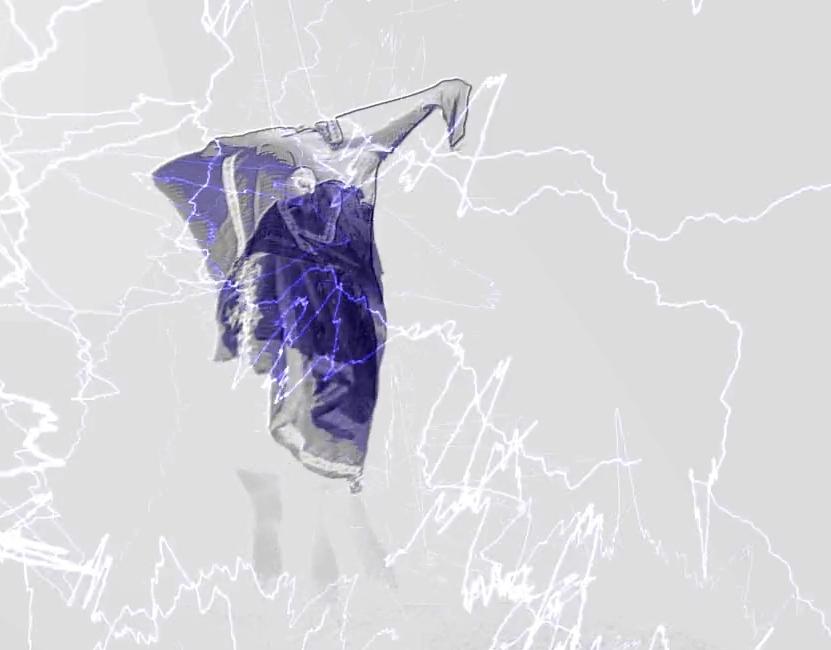

gallery spaces, to street and especially to the online realm — as Instagram — increases: how would in your opinion change the relationship with a globalised audience?

Freya Tewelde: What I have said earlier remains very key to this question, however due to global changes we are all experiencing the only method left is to continue and see where we develop in a safe and supportive platform for the arts and cultural sector in general. What strikes me also is how significant the social and physical side of what we do is now missing, or altered heavily, and it’s very important for me to think about this as a mother given that a future without social interaction would be really scary. I just don't know how anyone could predict the next five years or even next year for that matter.
Thanks for chatting with us and for sharing your thoughts, Freya. What projects are you currently working on, and what are some of the ideas that you hope to explore in the future?
Freya Tewelde: This year I am engaged with several projects. I am working with Turner Contemporary on public commission for the Margate Now Festival - entitled ‘Lost for Territory’. This project involves a large scale projection onto the facade of the Turner Contemporary. Also I will be showing other video works in galleries and spaces across Margate. I am working on video installation for solo show in London.
Moving forward, I am interested in working more closely with socially engaged projects that explore hope and building communities, innovative programmes, empowering folks and working with self-care in the community as well striving for a better context to think creatively during this historic time.
 "Last Light Heading Home" - 15x30 acrylic on canvas
"Last Light Heading Home" - 15x30 acrylic on canvas
Becca Farmer

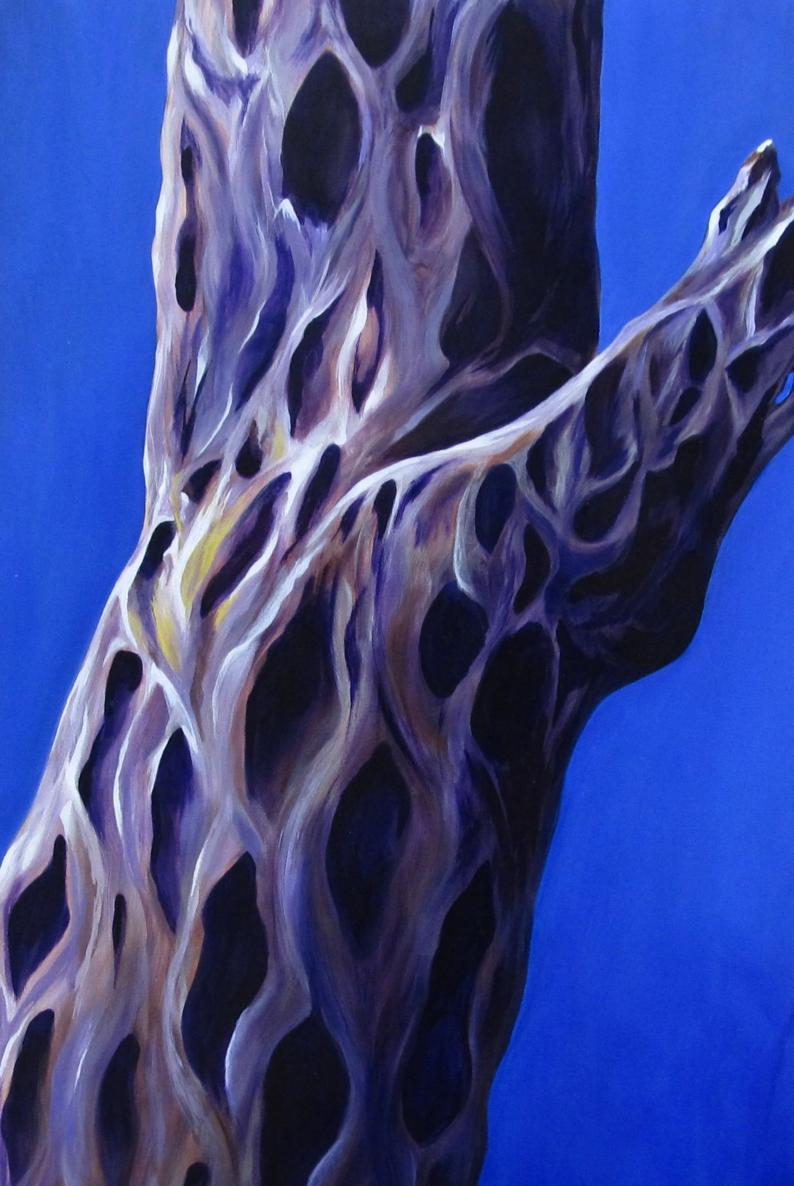 "Cactus Skeleton" - 48x24 - acrylic on gallery wrapped canvas
"Cactus Skeleton" - 48x24 - acrylic on gallery wrapped canvas
Hello Becca and welcome to ART Habens. Before starting to elaborate about your artistic production we would like to invite our readers to visit http://www.beccafarmer.com and we would start this interview with a couple of questions about your background. You have a solid formal training and you studied Design and Composition under Chris Magadini, internationally acclaimed illustrator: how did those formative years influence your evolution as an artist? Moreover, how does you cultural substratum as well as your career as a graphic artist help you to develop your attitude to experiment?
Becca Farmer: Hello! Thank you for this opportunity to share my story.

My formative years in Europe were saturated with art. We lived near The Prado and visited it often. I have vivid memories of standing in front of the massive “Las Meninas” and being drawn into the beautifully mysterious space that Velazquez created. Standing in front of the “Mona Lisa” in Paris is a clear memory. She is so small and simple, yet it’s like looking in a window into another world. My everyday life was filled with art on the streets and in public places. That type of creativity is contagious. I longed to be an artist too, so I emulated the artists I admired through drawing and painting.
When I was ready to formally study art, I pursued it with Da Vinci, Caravaggio, M.C. Escher and Dali in mind. I was fortunate that my teacher, Christopher Magadini, was acclaimed for his illustrative and composition superiority. To obtain depth, he was insistent upon the mastery of chiaroscuro. I drew spheres and flowing cloth to the point of annoyance! Magadini taught me a
Becca Farmer
solid foundation of drawing skills to build upon. His classes on composition provided what I needed to succeed as a graphic artist.
At that same time I was also studying molecular biology and chemistry. Those pursuits had a strong influence on my curiosity for living organisms. My imagination was sparked by discovering the mechanics of life and that intrigue continues to be an important part of my creativity.
Becca FarmerAs I have matured as an artist, my process has become much more intuitive. I believe I can be free in my ability to improvise and experiment because I have proficiency in drawing and composition as a starting point.
The body of works that we have selected for this special edition of ART Habens —and that our readers have already started to get to know in the introductory pages of this article — has at once captured our attention for the way the visual language that marks it out seems to be used in a

strategic way to explore and capture moments of life and expressing the fleeting beauty, providing your artworks with an array of meanings. New York City based artist Lydia Dona once stated that in order to make art today one has to reevaluate the conceptual language behind the mechanism of
art making itself: do you create your works gesturally, instinctively? Or do you methodically transpose geometric schemes? In particular, how do you consider the role of chance and improvisation playing within your creative process?
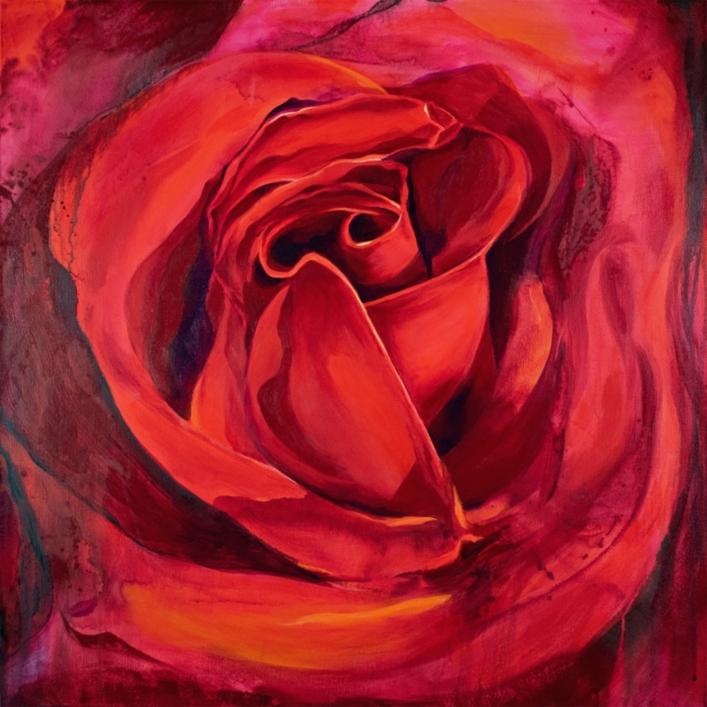
Becca Farmer: I begin with a very intentional exercise of exploring the subject that has inspired me. I examine how it grows and moves; what is close to the surface and what things are overlapping or hidden. I look at it from different angles and

experiment with close cropping and negative shapes that might be interesting.
Once I feel familiar with my subject and the composition I chose, I will mull over it for several
days. I often dream about how to paint it. I have ideas for improvisation come to me in my dreams. Then there comes a moment that I know I am ready to begin. I’ll sketch in a loose but proportionate representation and then block in colors. From that
point I will build up layers and develop depth. My imagination kicks in and I get lost in the creative process.
Your artworks often feature such vivacious tones

and we have really appreciated the vibrancy of thoughtful nuances that mark out some of your artworks, and we like the way they create tension
and dynamism: how did you come about settling on your color palette? And how does your own psychological make-up determine the nuances of
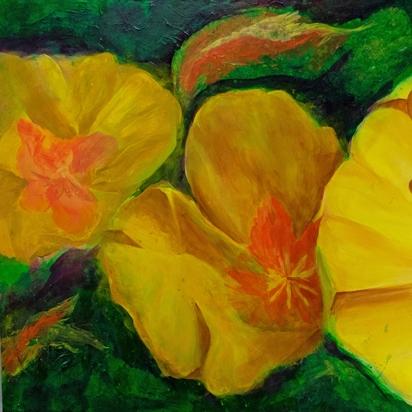
tones that you decide to include in your artworks?
Becca Farmer: I am a very focused person. I notice
details. I am a whole-hearted person attracted to contrast and powerful images. My color palette comes from what I see in nature around me.

Desert flowers have some of the most vivid colors in the world. Desert skies are amazingly blue. Sunrises and sunsets can be extremely dramatic. This environment stimulates my “all-in” personality type.
As you have remarked in your artist's statement, your passion in painting is to create dramatic visual experiences of color, contrast and depth that draw you in, to experience a new view of nature and, just maybe, a new view of life. With

their unique multilayered visual quality, your artworks seem to invite the viewers to look inside of what appear to be seen, rather than its surface, providing the spectatorship with freedom to realize their own perception: how important is
for you to trigger the viewers' imagination in order to address them to elaborate personal interpretations? In particular, how open would you like your works to be understood?

Becca Farmer: My painting of the “Cactus Skeleton” comes to mind when you ask that question. Cactus skeletons are plentiful where I live and are always popular with tourists. In some ways they look exactly like my painting, only much smaller. But when I created that piece, I was imagining the life that it once was clothed with. I purposely intensified the colors that I saw, to give an impression of vitality. One person caught and
remarked on that nuance. Most people love it because of all the cubby holes that look like fun to explore. Others enjoy the power of the shapes and colors. I am completely comfortable with any interpretation that emerges.
My hope is that through my expression of exploration and celebration of natural beauty, that the viewer’s imagination will be ignited with

similar responses. I hope that genuine value for nature will germinate and cause the viewer to take notice of their own natural surroundings, in a deeper way; ideally resulting in a personal concern for the wonder and fragility of nature.
You seem to draw a lot of inspiration from the deserts and forests of Arizona: what does attract you to portray nature?
Becca Farmer: The difference in seasons can be drastic in the desert, which is intriguing to me. I can empathize with the fluctuations of drama and drab. The desert is at times a monotonous expanse of dull, neutral colors; rocks, gravel and subdued dormant plants barely surviving in arid conditions. Then the rainy season comes and it bursts alive with vigorous colors of greens, scattered with fields of glowing wildflowers of

intense color, magnified in beauty by the bright sunlight. Such a dramatic and lush show must be seized in the moment; it may only last weeks or even days before reverting back to survival mode. I find it very exciting to capture those fleeting moments.
As you have remarked once, the greatest inspiration for art is found in the beauty of nature: how does everyday life's experience and memory — as well as growing up overseas and being influenced by cultures rich in art fuel your artistic research?

Becca Farmer: Because of living in several countries, I carry within me different perspectives on history and nature. The deep, historic roots of art in Europe were alluring to me because of my constant moving from place to place. There I experienced a stability which instilled a traditional influence in my art.
In Arizona, there is very little evidence of human influence throughout many hundreds of years. Some ancient ruins exist from the native people of long ago, but their lives rarely intruded on the land they occupied. So in this land that I have lived in for most of my life, there is a deep historic reverence for nature that I have felt and embraced. It affects my life choices. It influences and gives depth to my art.
Your style has been described as modern realism, depicting ordinary subjects in a classical approach of order and timelessness: Scottish painter Peter Doig once remarked that even the most realistic paintings are derived more from within the head than from what's out there in front of us: how do you consider the relationship between reality and imagination playing within your work?
Becca Farmer: Some of my favorite subjects are found in my everyday life, specifically in my


garden. I am fortunate to have a husband that has always enjoyed growing food and roses. It’s a thing with him and he does it well. I feel a deep connection and replenishment of life when we eat what we have planted and nurtured. As an artist, I love to take part in that process and find ways to incorporate that feeling into my art. I paint what my eyes see along with what my heart is feeling. Vibrant life. Growth. Purpose. How can those concepts be visualized except through imagination.
Gardening represents the continuum of growing and dying. Here today and gone tomorrow. It’s a process worth giving attention to. It’s worth exploring and celebrating. Painting is my voice to do so.
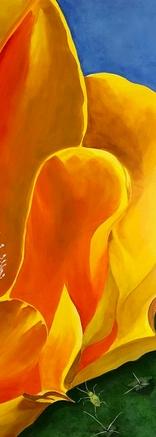
You are a professional artist: how do you consider the nature of your relationship with your audience? Direct relationship with the audience in physical locations is definetely the most important one, in order to snatch the spirit of a work of Art. However, as the move of Art from traditional gallery spaces, to street and especially to the online realm — as Instagram — increases: how would in your opinion change the relationship with a globalised audience?
Becca Farmer: I have discovered that having conversation with my viewers is like food to me. The interaction provides me with refreshment and energy. Each story is personal. Many times, hearing the revelations that have come through my paintings, will bring tears to my eyes because it was more profound than I had even imagined it could be. It’s that crazy feeling that my offspring has somehow taken my knowledge and run ahead of me! That is the joy of being a professional artist; to find those who have value for my voice and let it stir their imagination for greater things.
Through social media and the online realm, the doors of relationship between the artist and the patron have opened wide. It presents a valuable opportunity for my viewers to get to know me and my process, whether they live nearby or across the globe. It’s an open door of story and relationship.

I gladly welcome followers on Instagram (@becca.farmer.art), Facebook (facebook.com/Becca.Farmer.Art) and at my
website, www.BeccaFarmer.com . Because of this ability to connect so easily, it’s a very exciting time to be an artist.
We have really appreciated the originality of your artistic production and before leaving this stimulating conversation we would like to thank you for chatting with us and for sharing your thoughts, Becca. What projects are you currently working on, and what are some of the ideas that you hope to explore in the future?
Becca Farmer: Thank you. It is my pleasure. I have enjoyed the conversation as well.
I am grateful to continue painting brilliant desert flowers and visual experiences from my garden. In fact, I have an appointment to hike in the desert this afternoon to marvel over the Arizona poppies that are currently blooming from recent rains. I am also excited to be working on a new augmented

reality piece that combines a painting with a visualization tool app. It has been a challenge for me to construct and integrate the video portion but I have found that a good challenge incites creativity.
An interview by , curator and curator

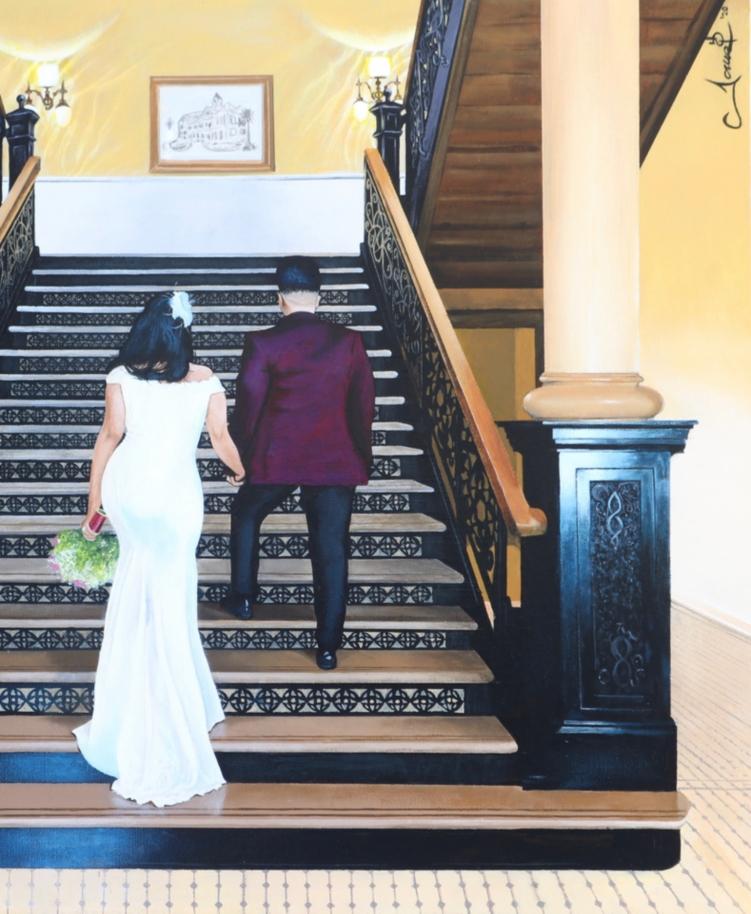

Ivan Jauri
An interview by , curator and curatorHello Ivan and welcome to ART Habens. Before starting to elaborate about your artistic production we would like to ask you a couple of questions about your background. After many years working in the aerospace industry what did address you to expand your creative potential to the field of Fine Arts? Moreover, how does your cultural background direct your current artistic research?

Ivan Jauri: Thank you for this opportunity and having me here along with many other great artists, it is a real pleasure to be here and it feels like a lot of the hard work I am putting into this is paying off.
I have been working 10+ years in the aerospace industry in the quality department where it is very important to produce the highest quality parts for some of the top aerospace companies as well as the US military. After many years working in this very interesting industry I knew that it was not what I wanted to do for the rest of my life so I knew that I needed to change something or at least change jobs so I could have more time off, with about the same pay, to pursue something that I loved doing. So my first venture was to go into a community college to take some graphic design classes. I took a semester on that subject but it was not exactly what piqued my interest so I decided to take acrylic painting for the next couple semesters and I just fell in love with painting. Since then I have not looked back and have practiced for over 3 years on my own now. I then also found a new job with less overtime so I can have about 3 or 4 hours per day to practice and hone my skills to the level I want to reach. I haven’t reached it yet and I believe as an artist there is always something to be discovered
inside and that only gets unveiled with hundreds of hours of practice.
I was born in Mexico City and was brought to the United States at a very young age, I miss my family in Mexico very much, including my Grandmother in Venezuela, Mexico and my other Grandmother that passed away about 15 years ago. I decided that one of my first series of paintings will be strong women within my
Ivan Jaurifamily. My first painting was of my Grandmother in law which is called “Ma Pera”, she is one of the strongest individuals that I have ever met and I felt like this is a great way of saying thank you to her for raising my wife when she was a child for many years. The second piece of art in this series is of my Grandmother that passed away, her name was Angela. I have just finished this piece and feel that is one of my very best pieces so far. The final piece of the series will be my Grandmother that is still living in Mexico and I have not seen her in person for close to 30 years. I also have plans to do a series of paintings that give praise to key players in the history of Mexico such as Pancho Villa and Emiliano Zapata.
The body of works that we have selected for this special edition of ART Habens and that our readers have already started to get to know in the introductory pages of this article has at once captured our attention for the way your practice of acrylics captures the richness of details from daily life: when walking our readers through your usual setup and process, would you tell us how did you develop your ideas? In particular, do you create your works gesturally, instinctively? And how do you consider the role of chance and improvisation playing within your work as an artist?
Ivan Jauri: My artistic skills developed very early in my life. Since I was around the age of 6 I started creating forms of art that were appreciated by other students and my teachers. One of my very first pieces of art that had recognition was in first grade when drawing one of a killer whale jumping out of the water and soaring through the sky. I can remember students showing interest in it and wondering how I can draw so well. Since then I have been developing my eye to hand coordination to draw objects, people and things to look as realistic as possible.



It wasn’t until junior high and high school where I began to develop a process to my art. I learned how to grid my reference material to then transfer it to my art and make it much easier to then free hand draw it. I spent most of my younger days drawing with pencil and really developing that first before entering the painting world.
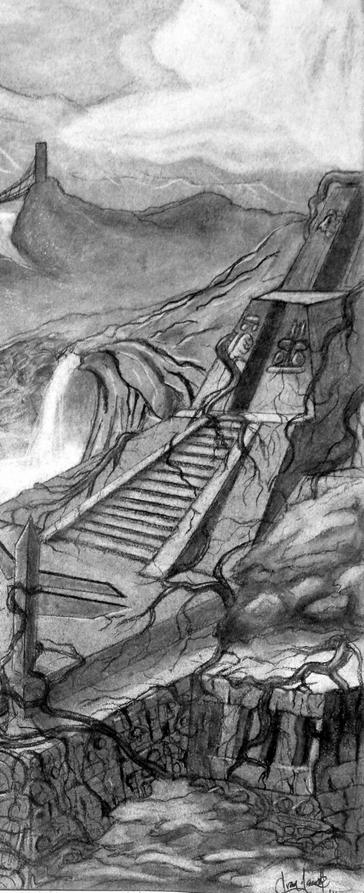
Up to this day I am still using the grid process to develop a map of where I want to go with the painting. Along the way I am always open to adding or omitting any details within the painting. For example, my latest painting of my Grandmother, in the reference picture she is holding a plastic bag in her left hand and reading glasses in the right hand. I replaced the plastic bag for a Holy Bible which looks like she is carrying it and removed the glasses from her right hand as I did not feel it went well with the flow of the painting. When I was in the process of painting this piece I did not know exactly what I was going to add or subtract from the original picture, but I trusted myself enough to go ahead and start the piece without knowing exactly what these changes were going to be. Now that I have finished I am really happy with the way it came out, flawlessly with no sign that I revised the actual picture and added my interpretation of how I see my Grandmother. She was very religious so I wanted to add something in there that represented her views of life.
With their rigorous realistic feeling, your works seem to unveil the bridge between the real and the imagined. Scottish painter Peter Doig once remarked that even the most realistic paintings are derived more from within the head than from what's out there in front of us, how do you consider the relationship between reality and imagination, playing within your artistic production?
Ivan Jauri: I love to create hyper realistic art with some added imagination to captivate minds. This is the type of art that I spend many hours observing and learning how other artists have achieved this type of painting style. I enjoy thinking about different ways to stretch the imagination and create something that has not been seen before. I am always playing around with ideas that I can start exploring and eventually end up as one of these pieces.
The relationship between real life and imagination in my art is recognizable as soon as you see the piece. Typically there are multiple objects or figures in my work with the main focus taking about 50 to 60 percent of the canvas. The rest would be elements that I feel add to the painting’s direction such as color variations, greenery and so on. The position on the objects also gives the piece a different form. As you see there many ways both realness and artistry can merge to create my style of art.
Marked out with such powerful narrative drive, your portraits reflects human spirit and unveil hidden details of the identity of your characters to manifest: what’s your philosophy on the nature of portraiture? How do you select the people that you decide to include in your artworks?
Ivan Jauri: My first series of art collection features strong women within my family that have forever changed my life and have given me the strength, guidance and love to continue on their legacy and forever cement their place in time with the art I produce. The first portrait in this series is my grandmother in law. She was a very important part in the bringing up of my wife as she helped to raise her for many years. It wasn’t until a few years ago that I met my grandmother in law and understood how much she impacted and guided my wife to be the strong woman she is today. The second portrait
is my grandmother from my fathers side, her name is Angela and she also was a very strong and independent woman that raised all of her 6 children by herself in Mexico City. She had a reputation for being very strict with her children but to me she was the kindest most loving grandmother I could ever ask for. The third portrait will be of my grandmother from my mother’s side. This one is still in the very early stages of the process so not much work has gone into it but the blueprint has already been developed. Some future projects will include people in history that have had a huge impact on myself and that have had an impact on Mexican history. Some of those names include Kobe Bryant, John Lennon, Pancho Villa and many more. So keep an eye out for some of these projects coming soon.
The unique visual quality of your artworks allows you to create emotional impact on the viewers, and we have particularly appreciated the way your works clearly show that vivacious tones are not strictly indespensable to create tension and dynamics. How does your own psychological make-up determine the nuances of tones that you decide to include in an artwork and in particular, how do you develop your textures?
Ivan Jauri: When I am studying my references, whether it is an object in front of me or a picture, I look at the subject matter and try to break it down by layers in my head. It is a little difficult to explain but it is similar to looking at a cross section view of any item but I am examining and breaking the layers up in order to understand what colors and textures go on each layer I am painting. This helps by creating small sections at a time and eventually creating the subject as a whole.
I have taken a couple of painting classes in my local community college where I learned the basic techniques in the world of acrylic art.


Since the class was quite large at 25 students, there was not much time to get direct one on one teachings from the professor. So I had to develop my own techniques to create different types of textures and depths that I wanted to achieve. Don’t get me wrong though, going to those classes at Cypress College gave me the fundamentals to grow in the correct way as an artist, I still think back to some of those times in class where the professor would show me steps to achieve a certain look. I will always remember those moments and use them frequently. With that being said, when deciding on color combinations I do use a color wheel to guide me in the right direction but when it comes to the final layer colors I use my own intuition and debate with myself to actually find the correct colors that I’m looking for.
You seem to draw a lot from real places — as for the interesting Monte Fritz Roy — as well as from the places you want to travel to: how do your surroundings inspire your creative process?
Ivan Jauri: Monte Fritz Roy is an interesting piece of art that was part of my learning process. During my second semester of acrylic painting class, one of the final assignments was to create a landscape that included objects and land to be near, middle and far away in order to create the illusion of depth. This assignment needed to have a gisele underpainting to help us develop this type of technique. Well then I went ahead and started my underpainting not knowing that my professor wanted a very rough underpainting. When it was time to check our progress, my professor just stared at my work for a few moments and then said that I have taken the underpainting way too far. That it had too much detail and that I did not follow the instructions of the assignment. Furthermore, he said that I should not do anything else to the painting, that it was good the way it is. At that point the painting was in black and white with
not much detail for my standards but I stopped and started a new painting that is now “Nirvana”. After the semester was over I decided to finish the black and white over detailed underpainting, I’m very glad I did because the finished colors just give it so much life. It is now known as “Monte Fritz Roy”.
As far as the inspiration for my landscapes I really like to paint places that I would love to travel to one day. I haven’t done any traveling outside the United States but soon when I am able to then I will definitely travel to all the many places that I have painted.
As you have remarked in your artist's statement, a lot of the time your art has messages that you want to get through the viewer: how important is for you to trigger the viewers' imagination, provoking emotions in your spectatorship? In particular, how open would you like your works to be understood?
Ivan Jauri: When I start a painting for myself there is always a deep connection that I have with the person or thing that is on the canvas. In my younger days as an artist I didn’t give too much thought about what I was drawing, I only wanted it to be as realistic as possible to “wow” the audience but now that I have been evolving as an artist I want to go deeper in the thought process. I want to create and transfer the emotions and feelings that I have onto the painting itself to then give a viewer a chance to relate to the art in their own personal way. The message behind my art can be interpreted in different ways depending on the person who is viewing it, as long as the viewer can connect to the art in some positive way then my job is done.
Your artistic approach to hyperrealism is marked out with particular attention to details, that provides the viewers with new perspective to relate themselves to the act of
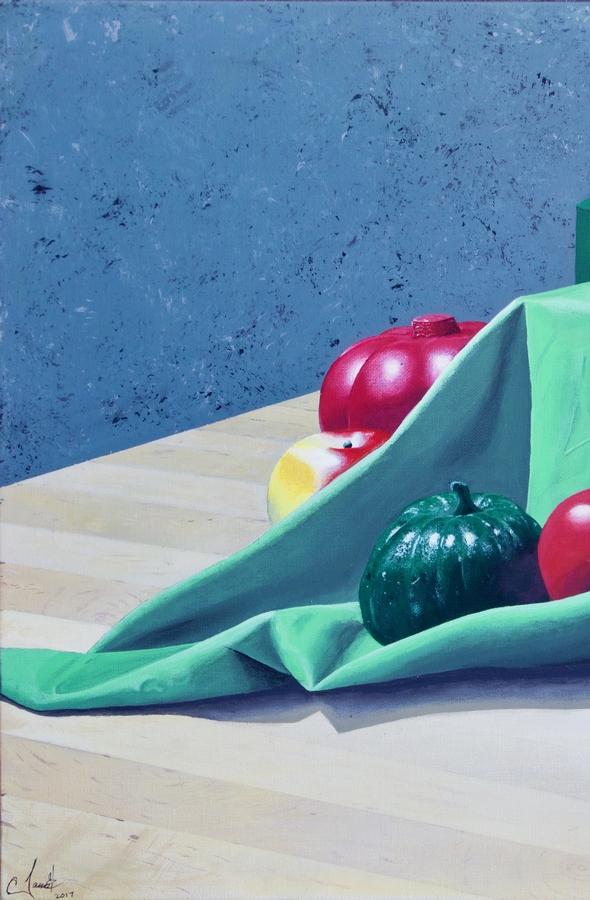

viewing. Could you comment the importance of details playing within your artistic research?
Ivan Jauri: Details are of the most importance to me. Some might say that the small details make the most difference and I believe in my type of art that it’s very true. I want to bring out all the small intricate details to the painting so the viewer can really appreciate how much time and effort has been put forth to complete it. Even the most simple object that is painted in a hyper realistic style has the potential to keep someone's interest by exploring all the strokes that created the illusion of realism. This is a huge part of my developing style of painting. Having such a realistic part of the painting mixed with some fictional elements is what really appeals to me as an artist.
You are a versatile artist and although your artistic production consists mainly of acrylic paintings, you aIso work with charcoal and pencil: what does fascinate you of acrylics and how do you decide to use a particular medium to create your artworks?
Ivan Jauri: Yes it is true that I like to use many types of mediums to express my artistic side of me. Back in the days when I was a young artist in high school I would always draw with pencil and pens since those were the most common and easiest attainable form of media I could use during class. Yes, many times I spent drawing during class instead of paying attention to the lessons, but all those hundreds of hours of doodling helped me hone a precise eye to hand coordination skill that would be the foundation of my art today. Later in high school I transitioned into markers, color pencils, water color, chalk and even some pottery. So having all these different opportunities at a young age kept me in a comfortable place to try different media even to this day.
One of the newest forms of media I am using the most, second to acrylic, is digital art. I had a



full semester of Adobe Photoshop at Cypress College so I understand most of the tools and what can be done. Soon after that I started using GIMP which is just like Adobe but its free. It is a very powerful software that has allowed me to continue learning digital art in my own home. When I have some free time typically during the weekend I like to watch youtube videos of how to create on GIMP using different techniques. Soon I will be submitting some of my digital art into some galleries so keep checking my social media for updates on that.
Most of my professional work has been in acrylic paint for a few reasons. When I decided that painting was going to be part of my life, I started to search for local community colleges that offered art courses and the most convenient location only had acrylic classes. I decided to take them even though I was searching for oil painting classes. I then later learned that oil paints are very expensive and I had to keep within my budget. Lastly, one of my professors told me that learning acrylic first then oils would be an easy transition. There are some differences between those two but one of the biggest differences is the drying time. Oils dry very slowly allowing an artist to mix and blend colors seamlessly whereas acrylics dry very fast and you would need to keep the paints moist to allow blending. So I figured if I got very good at acrylics then later down the road I can combine both which is the plan further down my career.
How do you consider the nature of your relationship with your audience? Direct relationship with the viewers in a physical context is definetely the most important one, in order to snatch the spirit of a work of Art. However, as the move of Art from traditional gallery spaces, to street and especially to the online realm — as Instagram — increases: how would in your opinion change the relationship with a globalised audience?

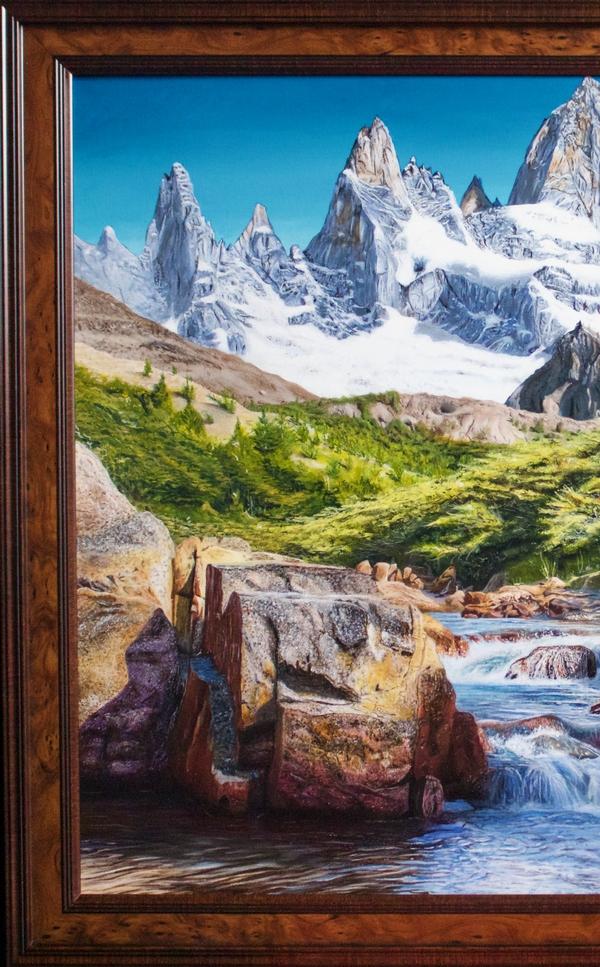

Ivan Jauri: There have been few times where I was able to interact with the audience in a live setting, I can say I have been in five different galleries where I was able to socialize with some viewers. I also had an upcoming gallery show at the Huntington Library in San Marino California, the show is called Art Matters but unfortunately like many other events it was canceled due to Covid-19. But soon I hope to again be able to interact with viewers as soon as this pandemic is under control. From the few times I was able to mix it up with the audience I don’t tend to sell the art at all. I believe that an art piece will sell itself to the right person that has that connection to them.
I also have regular postings on my Facebook (https://facebook.com/IvanJauriArt) and Instagram
(https://www.instagram.com/ivan_jauri_art) page that I encourage the audience to go see and purchase my art through the links on my bio. Now more than ever it is essential to build an online audience to get my name out there so it is recognizable in order to sell my art. I love connecting with different artists online and throwing different ideas back and forth between us. I am always willing to learn by picking the brains of professional artists to understand their process. I always welcome any feedback from viewers and always try to reach back out to show that I am present and appreciate their comments. This type of online relationships is very important to have and get accustomed to since it will be a huge part of being successful in the future.
We have really appreciated the originality of your artistic production and before leaving this stimulating conversation we would like to thank you for chatting with us and for sharing your thoughts, Ivan. What projects are you currently working on, and what are some of the ideas that you hope to explore in the future?
Ivan Jauri: First of all I want to thank you for this great opportunity to get my name out in the art community and for choosing me out of many talented artists. It feels great to create my art and to have an online publication, such as ART Habens, to reach out for an in depth interview. It is truly appreciated.
As I mentioned earlier in the interview, I am currently working on a series of portraits that involve strong women in my family. These women include both of my grandmothers and my grandmother in-law which I believe are the roots of my family tree. I want to pay tribute to them for raising all of the many children and grandchildren throughout their lifetime. I have finished two out of three portraits planned for this series so there is still some work to be done on this one. Some of the next projects that I will be exploring are painting legendary sports figures at their best moments in their careers but what will make it unique will be the backgrounds. I am not certain which way I want to go on the backgrounds but I know they will have some psychedelic feel to them. This includes individuals such as Kobe Bryant, Micheal Jordan, Mohammad Ali, Tom Brady and many more. Another idea I wish to explore would be painting moments in time that changed humanity forever such as the first moon landing, wartime moments, racial injustice (which we are going through it right now) and many more. Painting these moments will be a nice challenge to capture the meaning of each moment and it would also be an honor to do so. I can keep on going for a while since I have so many ideas I want to touch on so please follow me on my social media for my upcoming works of art.
Thank you.
An interview by , curator and curator

Lives and works in Givataim, Israel (Hava

Sharf)

 An interview by , curator and curator
An interview by , curator and curator
Hello Eva and welcome to ART Habens. Before starting to elaborate about your artistic production we would like to invite our readers to visit http://evasharf.com and we would start this interview with a couple of questions about your background. You have a solid formal training and after your studies at Manchester Regional College of Art, you nurtured your education at Goldsmiths’ College, London: how did those formative years — as well as your workshop with Birgit Skiold and with Tuvia Beeri — influence your evolution as an artist? Moreover, how does your cultural background direct your current artistic research?
Eva Sharf: I have always felt that I’m an outsider watching the world go by. I was an only child, born in Germany but growing up as a foreigner in in wartime England.

I always wanted to paint and scholarships helped me to go to Art School. London, after sooty industrial Manchester, opened up a new world for me. An Etching course with Birgid Skiold helped to develop new Ideas and techniques.
I married and we moved to Israel, I worked in graphics and teaching, but we spent most summers in London with its galleries and museums.
The body of works that we have selected for this special edition of ART Habens and that our readers have already started to get to know in the introductory pages of this article
Eva Sharf
(Hava Sharf)
has at once captured our attention for the way your practice of acrylics captures the richness of details from daily life, inviting the viewers to capture beauty in the ordinary: when walking our readers through your usual setup and process, would you tell us how did you develop your ideas? In particular, do you create your works gesturally, instinctively? And how do you consider the role of chance and improvisation playing within your work as an artist?
Eva Sharf: Sometimes I think about a painting for weeks, before I put brush to canvas. Colours or shadows catch my eye-
Eva Sharfbut that’s also a spoon and it’s one that my mother used in her Kitchen. However once a painting is beginning to take shape it has its’ own dynamics and preconceived ideas have to be forgotten.

As you have remarked in your artist's statement, the everyday things of life can evoke memories, simple objects that generations of women have used in daily life: how does your everyday life's experience fuel your creative process?
Eva Sharf: Reality is changeable from minute to minute and when I paint an object I have to create the world in which it lives, based on things seen and things imagined and I choose colours accordingly. To emphasize certain areas I use contrast of dark and light and build up certain areas with the palette knife. In my etchings, where I use only black and white, I learned the importance of finding this balance.
With their realistic feeling and their unique ambience, your works as — Ladle and Treasure — seem to unveil the bridge between the real and the imagined. Scottish painter Peter Doig once remarked that even the most realistic paintings are derived more from within the head than from what's out there in front of us, how do you consider the relationship between reality and imagination, playing within your artistic production?
Eva Sharf: I am curious about small changes in familiar places, hidden corners that catch my eye.
I photograph such details and store them

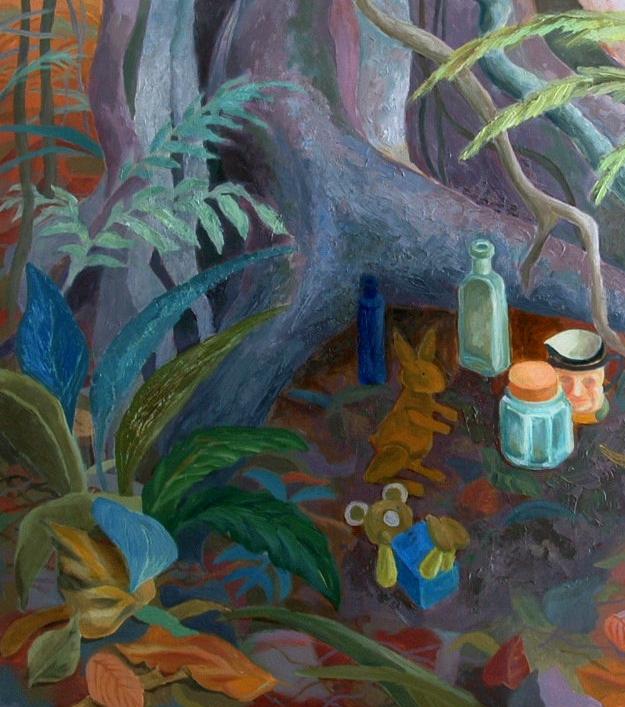
for reference on my computer.
As you remarked once, by the roadside, on waste land you see the things that have been rejected and thrown away - once they were so useful. New York City based photographer and sculptor Zoe Leonard once stated, "the objects that we leave behind hold the marks and the sign of our use: like archeological findings, they reveal so much about us": how do you consider the role of memory playing within your artistic research?
Eva Sharf: Moving from Germany to England and from England to Israel my mother took everyday household things with her that I knew from childhood . They woke memories of a way of life and entered my paintings.

You also create stimulating etching artworks, as forest wolves and wood: what does appeal you of this technique?
Eva Sharf: Painting and etching are complementary for me, I work slowly and in etching the image is built up in stages. The technical limitations and possibilities present a challenge.
I have worked in an etching studio with a small group over the years and we learn from one another.
With their unique visual quality, your artworks invite the viewers to look inside of what appear to be seen, rather than its surface, providing the spectatorship with freedom to realize their own perception: how important is for you to trigger the viewers' imagination, provoking emotions in your
spectatorship? In particular, how open would you like your works to be understood?
Eva Sharf: I hope my paintings speak to the viewer, so that he looks at his surroundings

with a fresh eye, and sees a different way of life.
You are an established artist and over the
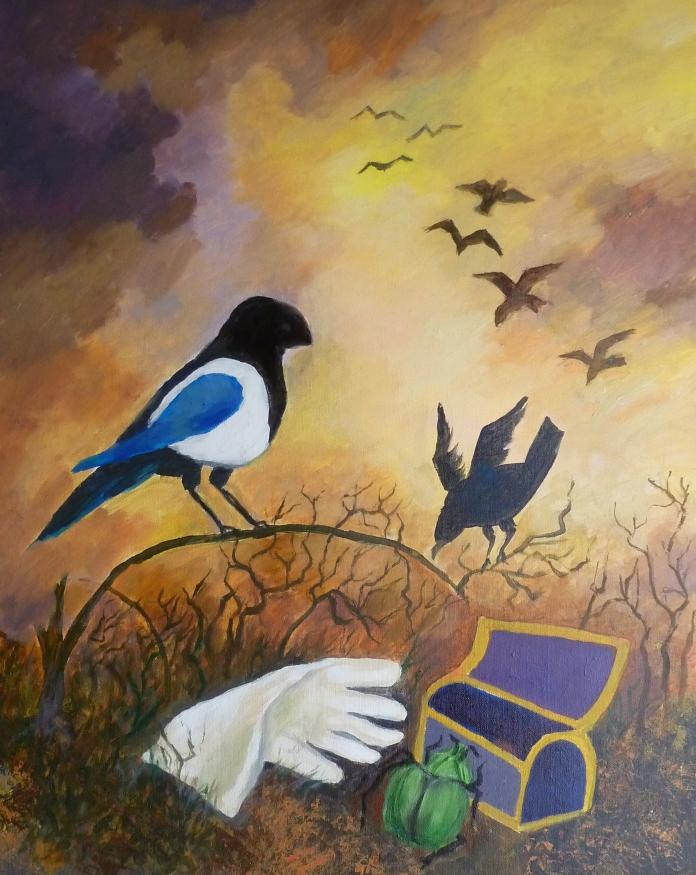

years you have exhibited your works extensively in Israel, Italy, France, Germany and in the United Kingdom. How do you consider the nature of your relationship with
your audience? Direct relationship with the viewers in a physical context is definetely the most important one, in order to snatch the spirit of a work of Art. However, as the move

of Art from traditional gallery spaces, to street and especially to the online realm increases: how would in your opinion change the relationship with a globalised audience?
Eva Sharf: The physical presence of a painting allows the viewer to notice nuances of colour and texture. However we all see the world through the Internet


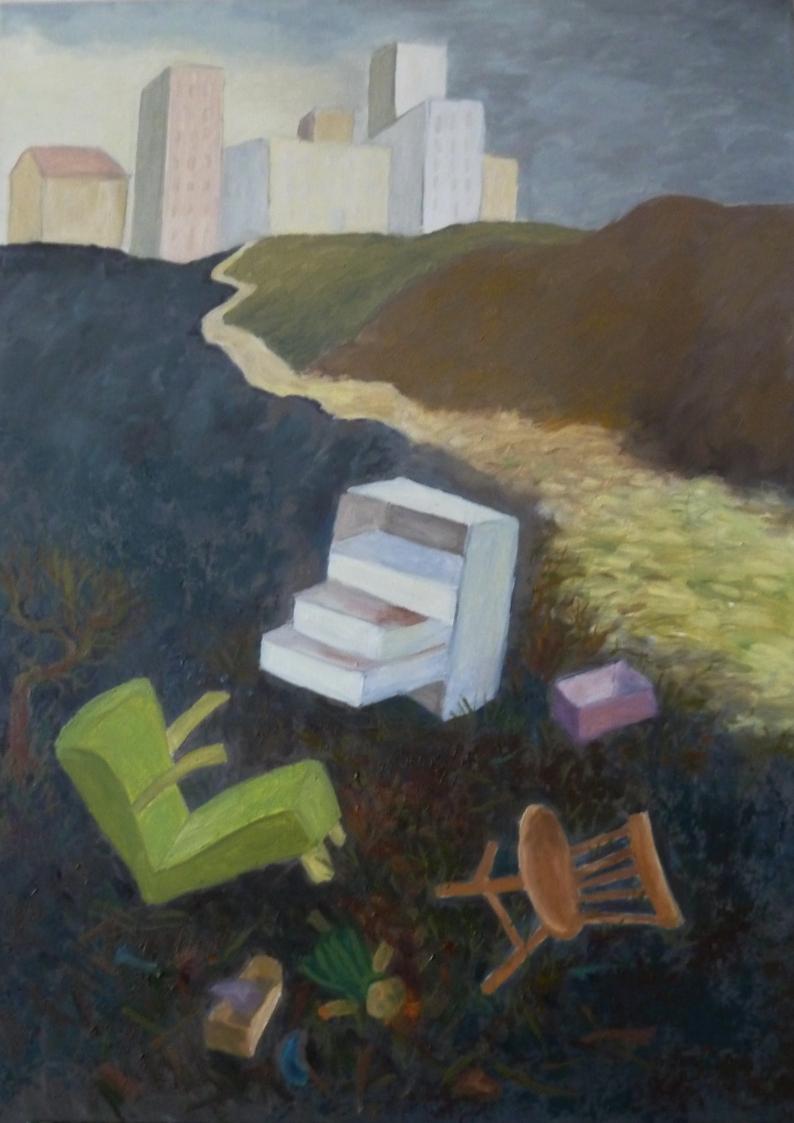
now and millions of people who would never go to galleries or museums can see Art work, but they may not realize that the physical presence is very different.
Maybe curiosity will encourage them to find out more.
We have really appreciated the originality of your artistic production and before leaving this stimulating conversation we would like to thank you for chatting with us and for sharing your thoughts, Eva. What projects are you currently working on, and what are some of
the ideas that you hope to explore in the future?
Eva Sharf: I am less mobile after an accident and have to work in smaller formats, so I try out mixed media crayons and collage, some abstract, some surrealist.


Lives and works in Arendal, Norway



Hello Hege and welcome back to ART Habens we already got the chance to introduce our readers to your artworks in a previous edition and we are now particularly pleased to discover the development of your artistic production. In particular, for this special edition we have selected
I Am Also You, an intriguing series that our readers have already started to get to know in the introductory pages of this article. When walking us through the genesis of this captivating body of works, would you tell us how did you structured your process on a technical aspect, in order to achieve such brilliant results?

Hi ART Habens, thank you for the positive response to my newest work and for having me back; I’m quite flattered.
I wish I could walk you through a very well thought through process where I’d amaze you with my brilliant technical mind and advanced process, however, the matter of fact is that I aim to include as little technicality as
Hege Haraldsenpossible in my work; a camera, natural light and a backdrop in this case.
We have really appreciated the essential quality that marks out your works, that are often marked out with simple compositive style and that provide the viewers with an intimate visual experience: what’s your philosophy on the nature of the portrait? How did you select the people that you decided to include in I Am Also You?
There’s an extensive process behind the creation of I am Also You. For the Nablus version; First of all I did not (and still don’t) speak any Arabic, and communication is key in this project.
I was fortunate to establish a ‘once in a lifetime’ friendship with a well respected local and ended up working close with this amazing individual whom assisted me in reaching out to
the subject matters that was needed to shape the series. This individual really grasped the concept and why I was doing it and ended up being just as passionate about the project as I am.
If it hadn’t been for this particular persons dedication I wouldn’t have been able to collect the level of strong stories and emotions that I did and for that I am forever grateful.
It’s important for me to include individuals from all walks of life in this project; the only thing connecting the subject matters in the Nablus series is Nablus itself and of being a human being.
The statement attached to every portraiture is created between the subject matter and myself through an in depth conversation about them, their life experiences, dreams, hopes and fears.
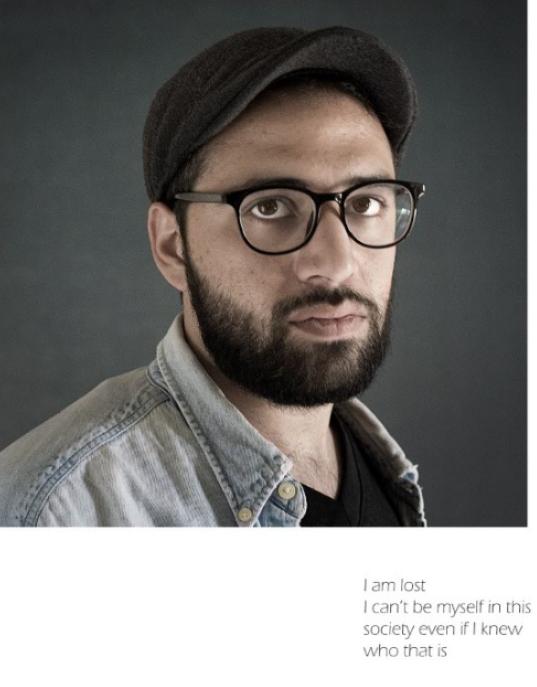

All of these conversations are recorded and works as an additional effect to open up for the viewer to connect and feel a relation to the work. So, if you head to my website you’ll not only see and read the work, you can listen to it as well. The philosophy I guess would be that I aim to include as many of the five senses as I can.
It's important to remark that I Am Also You was produced during a 2 month artist residency in the West Bank, Palestine: how importance do symbolically charged images and reminders to collective memory play in your work? And how do you think your works respond to it in finding hidden, crystallised moments in the everyday?
I have come to the belief that every person that’s participated in my project in Nablus will never forget the experience; me included. The way the project is formed doesn’t only force you to think and reflect on who you are
and what role you play in society but it also gives an opportunity to speak your truth - without any judgement. It’s allowed people to talk about the aspects of their life that they would never dare to open up to about with their family and friends and I feel extremely humbled by the trust that all of these individuals have showed me; a stranger who doesn’t even speak their language. It is in fact such a humbling experience that once I had finished up all the 30 portraits and exhibited them I had a bit of an emotional break down. To take on all of these stories is both a privilege and a burden. I wouldn’t want to be without them.
Back when I experimented with the project with my family, friends and colleagues, I encountered some individuals who had to kindly declined to participate based on the fact that they actually had no idea of who they are; they only
recognized themselves with the role they have been allocated in their family, or their work and had no grounding of who they are beside those aspects of their life. Even tough we weren’t able to create a part for them in the project I hope that just by asking them to participate and explaining the project that it’s planted a seed in them and made them reflect on themselves.
There was also some interesting experiences where I’ worked with couples that’s been married for years and years, listening in on each others conversation with me and being completely blown away of what their spouse think and get emotional about.
So, through these conversations I find crystallized moments or feelings that’s been buried and bring them to the surface which creates yet another treasured moment between all of us. For me some of these experiences saddens me but at the same time it strengthens my belief in my
work even more, and it’s importance. We need to ask these questions to people in our life.
As you have remarked in your artist's statement, the aim with I Am Also You is to break down barriers created to divide and separate, and enable people to see each other and accept each other through our many similarities. As an artist particularly passionate about inspiring to be more compassionate and connected, with our self and others, how do you consider the role of artists in our media driven and globalised contemporary age?
The role of an artist is important; we have the ability to visualize an idea or a thought in which can spread and emphasize the importance of a particular challenge in the world, a particular society, or environment. With this we can really change the world by provoking a thought or giving

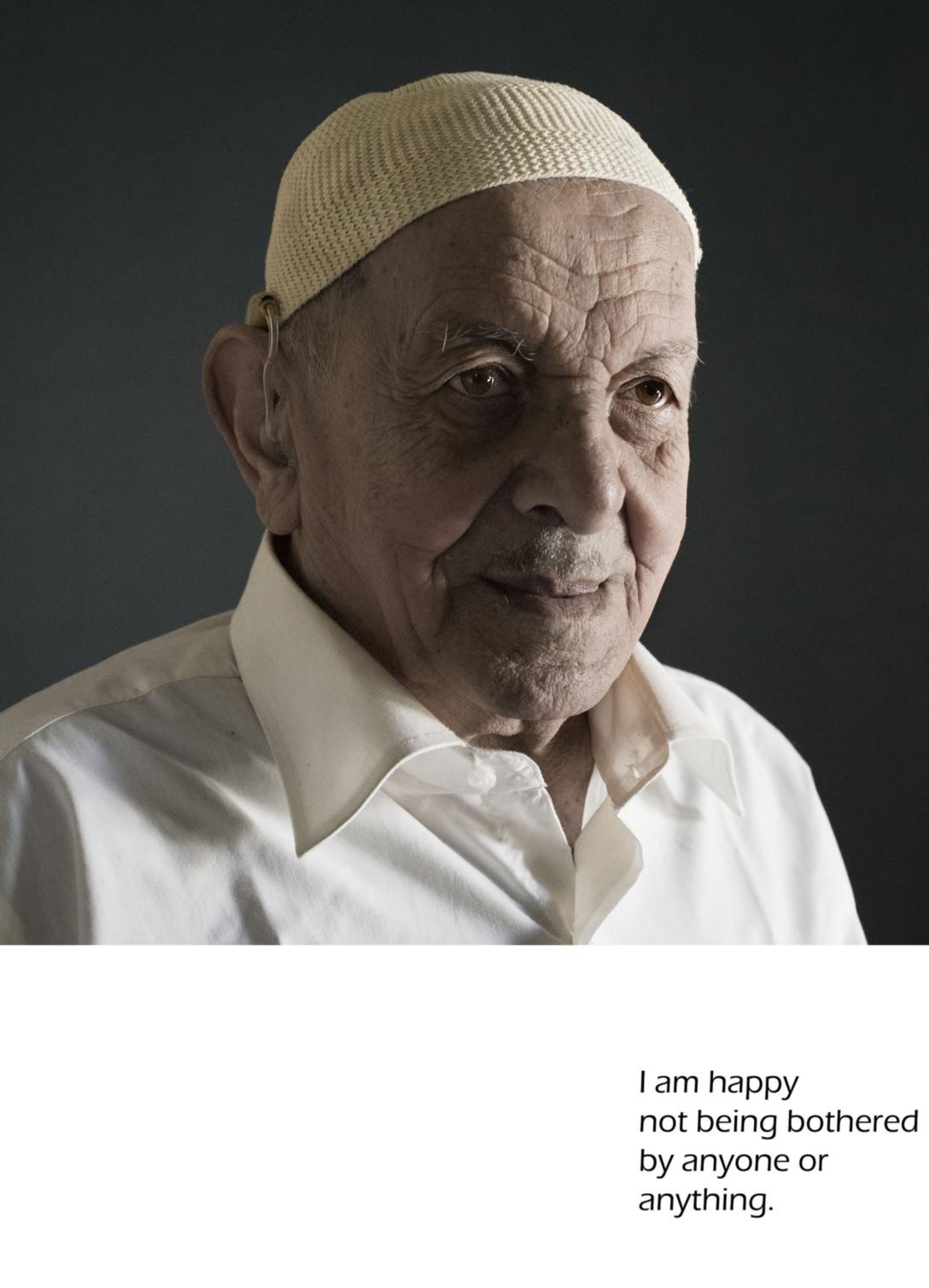
a-ha moments to one individual at a time. When you do this you are creating art and can consider yourself an artist. Art is; wether we want to or not; political. One way or another it’s always political. Even if it’s a portraiture and you are conveying their story; it’s political, cause most likely their story is political. For me, a pretty picture is not art, it’s simply interior decoration or a public decoration - and we need that too in this world, but it’s not art. Art is bigger and deeper than a brief visual satisfaction.
A major part of the history of photography has been concerned with the ability to affect social consciousness through images. Mexican artist Gabriel Orozco once stated, "artists's role differs depending on which part of the world they’re in. It depends on the political system they are living under": does your artistic research respond to a particular cultural moment?
I believe that no matter where you have been placed in the world to blossom you always have some fundamental social aspects that an artist can work with. Obviously in parts of the world where there’s war and occupation the majority will focus their work on the war and occupation rather than the social challenges they have in their society; it’s only natural. I don’t know if my work responds to a particular cultural moment, however I do think the issues that I address in my work have a greater audience in this day and age and it’s relevant no matter where you are in the world.
To emphasize their uniqueness and their values, the only stylistic device that you used for I Am Also You is a particularly simple background, with the aim to focus on the individual and not their living conditions or lifestyle: we have really appreciated the way your series breaks the emotional barrier
with the audience: what do you hope the viewers will take away from your I Am Also You series?
I work towards pushing the viewer to think about themselves on a deeper level. How do you act? How do you present yourself to this world? What do you give to this world and the people around you? What do you care about, and most importantly, do you act according to your values at all?
During conversations with the subject matter I can make sure that I raise some questions in the subject matter which forces them to think. With the viewer the only thing I can hope for is that they recognize something in themselves in the subject matters.
When and if the viewer does so I hope that it opens them up to the idea of seeing others in a different light; to consider and think before passing judgements on individuals and groups that
are strangers to them and actually with time discover all the similarities with joy, and have nothing but respect for the differences.
Inviting the viewers to inquire into the relationship between personal experience and the creation of identity, I Am Also You urges the audience to capture the uniqueness of human journey: how is travel and contact with other cultures influencing your artistic research?
Getting to know other cultures is vital for me on a personal level and hence just as important in my artistic work. I am a firm believer that traveling in a way where you get to know the place and the culture over time will make you blossom as a human being and have a greater understanding and appreciation for others.
I enjoy short vacations but I’d rather stay in one city to work


over a few months period to really get to know the place, the people and the culture.
When you grow as a human your work will grow simultaneously.
We sometimes tend to ignore the fact that a work of art is a physical artefact, and to treat it more as a window, or a even a portal. Photographs have that quality and that evokative power: how do you consider the relation between the abstract feature of the ideas you aim to communicate and the physical act of creating your artworks? And how does your daily routine has changed over these recent years?
I think people have different ways of approaching this. For me I can develop the concept of an idea for years and slowly experiment alone before I introduce it to anyone.
Not sure if that’s a good approach but I guess that’s just
the way I have had to go about it.
If the abstract feature; the concept, the idea is well thought through then once you are ready to show it in a physical form you can facilitate everything around it down to details to emphasize the idea.
We have particularly appreciated the way your artistic research unveils the relationship between memory, imagination and symbols, as in your interesting Blâ Awe series: in this sense, we daresay that you art practice also responds to German photographer Andreas Gursky when he underlined that Art should not be delivering a report on reality, but should be looking at what's behind: in particular, you seem to urge your spectatorship to challenge their cultural categories: how are important the symbols in your work and how important is for you to trigger the viewers'
perceptual parameters in order to address them to elaborate personal associations? And in
particular, how open would you like your works to be understood?

For me everything is about triggering the viewer, and I think that goes for the majority of artists. But this desire to trigger must not be misunderstood with the belief that I create the art for the viewer; I create it for myself. I create concepts around themes and social aspects that interests me - but when I present it I obviously would like for the viewer to be triggered to feel and see the magic that I myself have experienced and felt.
It’s always interesting to hear people talk about how they perceive your work and it immediately becomes obvious who’s grasping the whole message as intended and who isn’t - but I never tell people what they should see or feel; that’s not my place.
Thanks a lot for your time and for sharing your thoughts, Hege. How do you see your evolution as an artist over time? Are there any things that you do fundamentally
different from when you started years ago?
That’s a good question! Now when I’m thinking about it, everything has changed and yet nothing’s changed. I still develop work with the same fundamental values but it’s evolved as I’ve gotten more confident in my decisions and I stand more secure and strong in my work.
Some projects are life long projects for me, such as BLÀ AWE and I Am Also You; they will differ in locations and versions but they are for life. Right now I’m working on something that’s completely new where I’m mixing photography and drawing which I’m showing for the first time in Oslo in June - that’ll be a whole new experience.
Thank you for having me back, I’ve appreciated your in depth and knowledgeable questions.


 An interview by , curator and curator
An interview by , curator and curator
Hello Ard and welcome back to ART Habens we already got the chance to introduce our readers to your artworks in a previous edition and we are now particularly pleased to discover the development of your artistic production. The new body of works that we have selected for this special edition of ART Habens and that our reader can view at http://arddoko.nl has captured our attention for the way you are developing a more and more distinct visual identity. How does your practice has evolved over these two years and in what direction are you currently addressing your artistic research?
Basically the past two years have been very much a period of self-exploration for me. I took the time to sit down and ask myself; “Who am I and what direction do I want to go?” I came to the conclusion that I’m more comfortable when I don’t make promises. Whether this is a promise to myself or towards an online audience. I decided not to focus on social media, leaving it at a max of two posts a month. Not answering phones or busy texting with people. This gave me time to read about art, and invest myself in abstract art.
You are going to have your new solo exhibition

Between Pain and Pleasure that will start on May 25th in Amsterdam, at the GO Gallery, one of the most important street-art galleries of the Benelux: what are you preparing for your incoming show?
So Between Pain and Pleasure has been a concept that I’ve been toying with for around 18 months or so. It was a very confusing period for
me because I lost and gained people in my life, but to both extremes I guess. This left me a bit in between with a feeling like;”Should I be sad or should I be happy?” That exhibit is a visual representation of love and I hope it is not only relatable to me but to others as well. We all have endured excastic love and heartbreak in our lives.
Your work vary in size and material texture, and elicit different feelings from viewers when
Ard Dokoviewed from different distances. Marked out with such a powerful narrative drive, each of your painting seems to convey a unique story that you tell through vivacious as well as thoughtful tones, that you often contrast with a
white background: would tell us something about your aesthetic decisions, to achieve such brilliant results?
There is a certain level of intimacy when you paint people. Whether it’s a live model or a



picture, you are connecting on a higher level. In life, we choose which side we show to people.
I’m definitely not showing my sad or angry side to people that I don’t know. It’s when people put
time and effort in the relationship that they understand the person. The same goes for my paintings, you can have a quick glance and see an aesthetically pleasing image, or you come up

closely and discover the story between the cuts and cracks. I tend to avoid mixing colors but just go with what I have because those colors seem the most vibrant. As for the white background.. it
makes the subject more part of its environment than the part of the painting.
Some of your recent artworks, as I'm not your Cathalina James, December kid and I'm not your

Venus Extravaganza have a more evident figurative feature. What we have mostly appreciated of this new artworks is that you seem to be wanting to move beyond standard
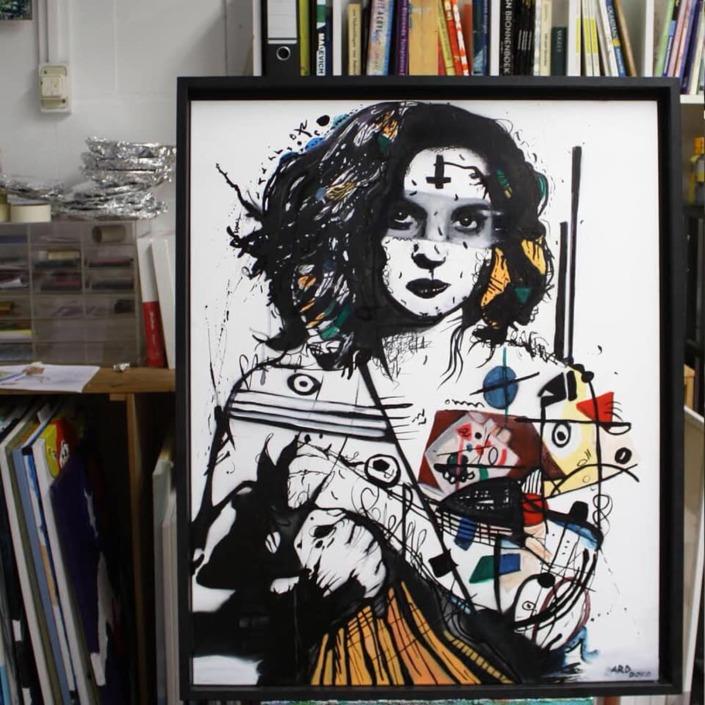
representation, but not too much beyond it, to provide your characters with strong identity.
How do you select your character and who are the people that you include in your artworks?
They’re based on the people around me. December kid for example, is based on a story my friend told me. He said; “Whenever I go to meet-up for a date with a guy that I don’t know, I
bring a bat with me”. I don’t want to be another headline in the news”. That comment stuck with me since there is this misconception about The Netherlands. We’re not that free-spirited and

liberal as people think we are. We still have issues about gender, feminism, ethnicities and violence against said LGBTQ communities. It is not that I’m really focussed on this, it’s just that it comes to

me by nature and it pisses me off to a level that I have to express it in my work.
As you have remarked once in a previous interview with us, your work could be

considered a reflection of the troubled ones of your generation, affected by lots of issues concerned with war, as well as by the overgrowing saturation of information. How does in your opinion the role of artists has changed in our fickle contemporary societies? Could Art give us a different - and more human, indeed - perspective about our ever changing reality?
It’s hard to answer without sounding too pessimistic regarding your question. Don’t get me wrong, I believe that there is an opportunity for that, which is something art could offer. However the art scene has evolved so much over the course of ten years that it also has it’s toxic elements, mainly the people out there looking for fame or excessive wealth. Art should be something that let people feel or think, either showing that harsh reality without a filter or give us the opportunity to escape that reality not just to gain likes and attention.
Your recent works are very physical, and grounded at points. What I find personally compelling though, is elusive tenderness, the way your art captures the multifaceted nature of human experience – like a desire to move from our physical plane into something resembling transcendence, that invites the viewers to capture the beauty of ordinary, daily life. Can you talk about that?
It is something that I had to learn in life. I used to be angry and frustrated with myself. This was a major part throughout my existence until I met this kid that was the complete opposite of me. We met during this show we both took part in. He was this Jimi Hendrix, peace loving guy who was an incredible guitar player and an incredible human being in general. We stayed in touch to
discuss these subjects and just to have this philosophical friendship where he taught me to enjoy the little things, to embrace people and love and forgive. He always seemed ok to me, until I received a message from a mutual friend that he committed suicide. This wasn’t the first time in my life to receive such a message but this one was perhaps one of the most upsetting to me. I promised myself to keep his lessons alive and to focus on the things that are important to me, which is love, happiness and freedom.
As a graffiti artist, your practice is marked out with a pronounced physical quality. We sometimes tend to ignore the fact that a work of art is a physical artefact, and to treat it more as a window, or a even a portal. Street art has that quality and that undoubted evocative power: how do you consider the relation between the abstract feature of the ideas you aim to communicate and the physical act of creating your artworks? And how does your daily routine has changed over these recent years?
I’m always on the hunt for that strong correlation between a powerful message and an aesthetically pleasing image. That sweet spot is something that I didn’t nail, yet, but I’m getting there. If I look back at the works I did before they all have this certain rawness of, for example; a first album.
I do believe that exhibits and albums are sharing similarities and I feel like I am in a phase that it is way more polished than 5 years ago. Not that those works were bad, but the works weren’t that developed as now. I took my time to study art and study various directors, musicians and artists that I enjoy. This helped me develop my style and mindset. Other than that, it is just constant trial and error when painting.
It's important to mention you became Street-art Expert at Catawiki and that you are currently involved in setting up community art projects. Interdisciplinary communication between the art forms is a massive resource and inspiration and it's no doubt that collaborations as the one that you have together are today ever growing forces in Contemporary Art and that the most exciting things happen when creative minds from different fields of practice meet and collaborate on a project: could you tell us something about your collaborative projects? What does direct you to such stimulating community projects?
Doug Leunig, who is a friend of mine from the U.S told me about Backyardism. Which in essence means: You can’t change the whole world, but you can change what is happening in your “backyard”, meaning the community you live in. I believe that community building is important, especially when it is getting lost due to the globalization of our lives. With projects like Big Picture Festival in Illinois, the aim is to create opportunity for children in arts. This is not only a graffiti festival, it has science lessons, dancing, music, food and dialogue projects. It is more of a creative way to educate and giving tools to others. I’m in favor of educating and connection people from all types of classes. That is my big motivation.
As the move of Art from traditional gallery spaces, to street and especially to the online realm increases, how would in your opinion change the relationship with a globalised audience?
Besides my work as an artist I share my street-art expertise at Catawiki, which is an online auction platform. We auction off around 300 works by
street-artists, collectors and galleries each week. The main shift that I see is that artists are becoming more and more self-sufficient. In a way, they are becoming their own brands. With platforms like ours and social media like Instagram, the market is opening up for a lot of people.
Not just the artists themselves have the opportunity to create a stable income but buyers have these easy accessible ways to purchase works from their home. Some might say this is causing an oversaturation of the art market, others say it is great for the industry. I’m in the middle, I do think it is good for the artists and industry, however I am concerned that some might lose the essence of street-art or art in general. Time will tell and I am happy to work with online platforms and traditional galleries because I think they can have a stable relation.
Thanks a lot for your time and for sharing your thoughts again, Ard. How do you see your evolution as an artist over time? Are there any things that you do fundamentally different from when you started years ago?
I don’t know where I see myself in, let's say, 10 years from now. I strive to become more rooted in my work. Creating pieces that tell a story and do more work with museums and organizations. The fundamental change is that I learned to say no and to give things time. This gave me the opportunity to develop my work and to do business in a professional way.
An interview by , curator and curator
